
BLOG: APPLIED RESEARCH OF EMMANUEL GOSPEL CENTER
The Nature of Community Research
What is community research?
Photo credit: Sam Ramsey via Lightstock
The Nature of Community Research
By Rudy Mitchell, Senior Researcher
Communities are complex social systems made up of people interacting with each other within a local area. The geographical context can be as small as a neighborhood or as large as an entire region.
As we learned in the first part of the Community Research and the Church series, community research includes various tools to learn more about your neighbors and community.
Community research is the systematic, careful study of a group of people who have common ties and social interactions, as well as the local area in which they live or interact.
How does this square with our Christian faith? God’s revelation provides a perspective on the world that informs our study of communities and culture. This biblical and theological research combined with community research helps us apply biblical principles and develop practical ministries in the church and community.
This presentation is part of the larger series, Community Research and the Church. In the next segment, we explore the value and relevance of community research.
Ministry With Eyes Wide Open: The Varied Lenses of Community Research
From community-based participatory research to social-network analysis, there are various ways Christians can learn more about the communities they serve.
Photo credit: Hamilton Photography via Lightstock
Ministry with Eyes Wide Open: The Varied Lenses of Community Research
By Rudy Mitchell, Senior Researcher
Are you seeing all that can be observed about your community?
From community-based participatory research to social-network analysis, there are various ways Christians can learn more about the communities they serve.
In this presentation, we explore several approaches to community research:
Spiritual and religious assessment
Historical-research approach
Demographic approach with mapping
Community-based participatory research
Assets-based approach
Needs-assessment approach
Community-indicators approach
Leadership studies and stakeholder analysis
Case studies of organizations and best practices
Social-network approach
Systems-analysis approach
A number of these approaches can be used as part of an overall community-building or community-development process that leads to community transformation.
This presentation is part of the larger series, Community Research and the Church. In the next segment, we explore the nature of community research and how it relates to biblical research and Christian ministry.
Community Research and the Church
A Christian church or ministry functions in the context of a particular community. To effectively minister in that community, it’s important to understand it.
Photo Credit: Athena Grace via Lightstock
Community Research and the Church
by Rudy Mitchell, Senior Researcher
A Christian church or ministry functions in the context of a particular community. To effectively minister in that community, it’s important to understand it.
There are various ways Christians can learn more about the communities they serve. Community research provides us with the tools to go below surface observations. It lays a foundation for community transformation and effective witness.
In this series, we explore several facets of community research: different approaches, its nature, and its value and relevance to the church.
Illustrated Guide for Researching Your Community
From population trends to social needs, this illustrated guide lists the factors to consider when learning more about a local neighborhood or community.
Photo credit: Boston Heath via Lightstock
Illustrated Guide for Researching Your Community
by Rudy Mitchell, Senior Researcher
Click here for a template of a community research guide.
Community or Neighborhood Name:
Community geography
Clearly identify the boundaries of your community (geographical, political).
Identify the U.S. Census tracts of the community (unless you are covering a large area) or identify other defined areas used in population or demographic surveys.
Describe the main geographical features of the neighborhood or community. Describe any other basic defining characteristics or features. What key features (rivers, hills, waterfront, railroad, etc.) influence or define the nature and boundaries of the community?
Create or obtain a detailed map of the neighborhood or community. Add boundaries and use the base map to add other items of interest such as churches, schools, social service organizations, landmarks, cultural organizations, neighborhood associations, recreational facilities, and other resource assets. Separate maps can be created for different types of resources or institutions. You can also do this using layers in digital maps. You can use Google My Maps to create and share online maps. See google.com/mymaps. Another online option is to create a map in Harvard World Map, worldmap.harvard.edu, or Open Street Map, openstreetmap.org.
Grove Hall Boundaries and Census Tracts
Map of neighborhood churches
Examples of maps in a community study.
Map of Organizations and Programs in a Neighborhood
Key to map
Maps of schools, churches, and other institutions can be created, or these can be combined using symbols into one map.
Hawthorne Grove, the Marshall P. Wilder Estate
Community History
Research the community’s history using primary and secondary sources, as well as oral history interviews. Aspects of community history may include biographical information on significant people; the history of the built environment; the history of religious and cultural organizations; economic and political history; and the history of ethnic, racial, and social changes. The history can be presented in narrative form supplemented with maps, charts, and visual illustrations.
Old Blake House, Edward Everett Square, Dorchester
Overall population and population trends
What is the current total population of the community or neighborhood?
What overall population trends have occurred in the last several decades? Include earlier data if available. Explore possible reasons related to the changes and possible future trends.
| Decade | 1990 | 2000 | 2010 | Latest |
|---|---|---|---|---|
| Total population | ||||
| % change from previous decade |
[The formula to find the % change is (B-A) /A x 100 =. Say the 1980 population (A) is 1,000 and the 1990 population (B) is 800. To find the % change from 1980 (A) to 1990 (B), begin on the calculator with B (800) and subtract A (1,000) then divide that by A (1,000) x 100, and then hit =. You should get -20. You can add the % sign to -20. The % change from A (1,000) to B (800) is -20%.] Source:
Example of a line graph showing the population trend for a neighborhood study.
Ethnic and Racial composition and trends of the community
Fill out this table for the major ethnic and racial groups in the community. (You may expand the table if you would like to include more groups, or you may combine smaller groups into an “Other” category.) Separate tables can be created for each census tract or for specific nationalities within the Hispanic group. Graphs and maps may also be used to visualize trends and changes. If the community has other nationalities and ethnic groups not listed in your table, you can list and describe them separately. Describe any intercultural or inter-racial tensions that exist. Summarize your observations and analysis of population trends.
| Name of group (ethnic group, racial group etc.) | 2000 | 2010 | Latest | pop. of group | % of total pop. | pop. of group | % of total pop. | pop. of group | % of total pop. |
|---|---|---|---|---|---|---|
| 1. | ||||||
| 2. | ||||||
| 3. | ||||||
| 4. | ||||||
| 5. | ||||||
| Total pop. | 100% | 100% | 100% | |||
The formula to find the percent is: A/Total x 100 =. Say there are 2,000 people (total) in your community, and 250 (A) are Hispanic. Put 250 (A) on your calculator, and divide by 2,000 (total) and multiply by 100 = 12.5. You can add the percent sign to your answer because you multiplied by 100. 250/2,000 x 100 = 12.5% of the people in your community are Hispanic. (Make sure your percentages total 100%.) Source:
From this table, how has the ethnic and racial composition of the community changed in the last few decades? Summarize your observations and analysis of population trends.
Describe any intercultural or inter-racial tensions that exist.
Example of a graph showing racial trends in a neighborhood.
Languages spoken and Linguistic Isolation
What languages are spoken in the community? Provide numbers per language.
What number and percentage of the population are linguistically isolated? ( A household is linguistically isolated if all members 14 years and older speak a non-English language and they speak English less than “very well.”) Of those who are linguistically isolated, what percentages speak various languages other than English? What percentage of the population over 5 years speaks English less than “very well?”
What are the age characteristics of the community’s population?
Complete the following table to reveal any important differences between the age profile of the church, community, and nation. Use your personal estimate or ask your pastor for the church data. (Figure the percentages and make sure they add up to 100.) Do the percentages differ significantly between the church, the community, and the nation?
| Age category | Your church | Community | Nation | Number | % | Number | % | Number | % |
|---|---|---|---|---|---|---|
| 0-4 years | ||||||
| 5-9 years | ||||||
| 10-19 years | ||||||
| 20-34 years | ||||||
| 35-64 years | ||||||
| 65+ years | ||||||
| Total | 100% | 100% | 100% | |||
The formula to find the percent is A/Total x 100 =. Say there are 200 people (total) in your church, and 25 (A) are youth. Put 25 (A) on your calculator, and divide by 200 (total) and multiply by 100 = 12.5. You can add the percent sign to your answer because you multiplied by 100. 25/200 x 100 = 12.5% of your church are youth.
What is the current median age of the population? Compare this with the median age of the nation, state, and larger city, or metropolitan area. Compare median age differences between different races in the community (and between the Hispanic and non-Hispanic populations).
Observe more specific characteristics of the teenage and young adult populations, such as the racial and ethnic composition. Break down the age groups by single years.
Which generations are represented in significant numbers in your church? Is one generation dominant?
Baby Boomers, born 1946-1964
Generation X, born 1965-1980
Millennials, born 1981-1996
Generation Z, born 1997-2012
Examples of graphs showing age profiles and comparisons of a neighborhood.
Family Characteristics and Marital Status
What is the average household size in the community? What is the average household size in the individual census tracts or subsections of the community? Observe any variations and also compare with the metropolitan area, state, and nation.
What are the numbers and percentages of the population (over 15 years) in your community who are:
| Marital status | Number | % |
|---|---|---|
| Now married (except separated) | ||
| Single (never married) | ||
| Separated | ||
| Divorced | ||
| Widowed | ||
| Total population (over 15 years) | 100% |
Source:
What percentage of families consist of (Compare to total population: A/total x 100 = %)
Married couples with children (under 18 years)? %
Married couples without children (under 18 years)? %
Households
What is the total number of households?
What percentage of households are family households?
What percentage of households are non-family households?
How do these percentages compare with the state and national percentages?
How many family households have children under 18 years?
How many of these family households with children under 18 are female-headed with no male spouse present?
How many of these family households with children under 18 are male-headed with no female spouse present?
What number and percentage of family households with children under 18 are single-parent households?
Number:
%:
What percentage of children under 18 years living in households, lived with
Grandparents:
Other relatives:
Non-relatives:
Economics and Income
Poverty
What percentage of the population is living below the poverty level?
What percentage of youth age 18 and under are living below the poverty level?
What percentage of youth ages 12-17 are living below the poverty level?
Families: What is the total number of families? What is the number of families living below the poverty level? What percentage of families live below the poverty level?
Comparisons: How do the percentages above compare with the city, state, and national percentages? Do some parts of the study area have higher rates of poverty than others?
Income
What is the median family income in this community?
What is the mean (average) family income in this community?
| 2000 | 2010 | Latest | |
|---|---|---|---|
| Community | |||
| Metropolitan area | |||
| State | |||
| Nation |
Trends
Has the general income of the community changed significantly relative to wider trends? (Middle income to lower income, or gentrification, etc.)
EMPLOYMENT
Major employers or types of employers in the community?
What is the present rate of unemployment? %
Have there been any changes in the type of employment, location of employment, or unemployment rates?
Education
Highest level of education: What percentage of all persons over 25 years old have
Less than high school?
High school?
Bachelor’s degree?
Master’s degree or higher
How do these percentages compare with the national and state percentages?
Example of a graph comparing educational achievements.
What is the current event drop-out rate for any high schools in the community?
Research the elementary and secondary educational institutions in the community.
List and describe each school. Provide any statistical data available.
List any postsecondary educational institutions and their enrollment.
Jeremiah Burke High School
Housing
What are the major housing types in the community based on your observation? (High-rise apartments or public housing; single-family detached houses, rowhouses, duplexes, triple-deckers, etc.)
What percentage of the housing units are owner-occupied? % (Compare to total)
What percentage of the housing units are low-income or affordable? % (Compare to total)
What is the median housing value for the community? For the nation?
Is the housing value increasing, decreasing, or stable?
What are the current typical monthly rental costs for a
Studio:
One-bedroom:
Two-bedroom:
Or more bedrooms
What housing needs and problems does the community have?
Recreation
List any important recreational facilities and activities in the community:
Source:
Community events
List major community events that occur annually or regularly:
Source:
Organizations
List any major community organizations, neighborhood associations, clubs, social, political, or educational groups:
Source:
Media
How are events in the community publicized?
Is there a community newspaper?
Source:
Social Needs
List any important Social Service Agencies and their services:
Source:
List three social needs that are not being effectively met by these groups.
Source:
What are the major crime concerns in the neighborhood?
Source:
Click here for a template of a community research guide.
Guide for Researching Your Community
From population trends to social needs, this guide lists the factors to consider when learning more about a local neighborhood or community.
Photo credit: JYount Photo via Lightstock
Guide for Researching Your Community
by Rudy Mitchell, Senior Researcher
Click here for an illustrated guide to researching your community.
Community or Neighborhood Name:
Community geography
Clearly identify the boundaries of your community (geographical, political).
Identify the U.S. Census tracts of the community (unless you are covering a large area) or identify other defined areas used in population or demographic surveys.
Describe the main geographical features of the neighborhood or community. Describe any other basic defining characteristics or features. What key features (rivers, hills, waterfront, railroad, etc.) influence or define the nature and boundaries of the community?
Create or obtain a detailed map of the neighborhood or community. Add boundaries and use the base map to add other items of interest such as churches, schools, social service organizations, landmarks, cultural organizations, neighborhood associations, recreational facilities, and other resource assets. Separate maps can be created for different types of resources or institutions. You can also do this using layers in digital maps. You can use Google My Maps to create and share online maps. See google.com/mymaps. Another online option is to create a map in Harvard World Map, worldmap.harvard.edu, or Open Street Map, openstreetmap.org.
Community History
Research the community’s history using primary and secondary sources, as well as oral history interviews. Aspects of community history may include biographical information on significant people; the history of the built environment; the history of religious and cultural organizations; economic and political history; and the history of ethnic, racial, and social changes. The history can be presented in narrative form supplemented with maps, charts, and visual illustrations.
Overall population and population trends
What is the current total population of the community or neighborhood?
What overall population trends have occurred in the last several decades? Include earlier data if available. Explore possible reasons related to the changes and possible future trends.
| Decade | 1990 | 2000 | 2010 | Latest |
|---|---|---|---|---|
| Total population | ||||
| % change from previous decade |
[The formula to find the % change is (B-A) /A x 100 =. Say the 1980 population (A) is 1,000 and the 1990 population (B) is 800. To find the % change from 1980 (A) to 1990 (B), begin on the calculator with B (800) and subtract A (1,000) then divide that by A (1,000) x 100, and then hit =. You should get -20. You can add the % sign to -20. The % change from A (1,000) to B (800) is -20%.] Source:
Ethnic and Racial composition and trends of the community
Fill out this table for the major ethnic and racial groups in the community. (You may expand the table if you would like to include more groups, or you may combine smaller groups into an “Other” category.) Separate tables can be created for each census tract or for specific nationalities within the Hispanic group. Graphs and maps may also be used to visualize trends and changes. If the community has other nationalities and ethnic groups not listed in your table, you can list and describe them separately. Describe any intercultural or inter-racial tensions that exist. Summarize your observations and analysis of population trends.
| Name of group (ethnic group, racial group etc.) | 2000 | 2010 | Latest | pop. of group | % of total pop. | pop. of group | % of total pop. | pop. of group | % of total pop. |
|---|---|---|---|---|---|---|
| 1. | ||||||
| 2. | ||||||
| 3. | ||||||
| 4. | ||||||
| 5. | ||||||
| Total pop. | 100% | 100% | 100% | |||
The formula to find the percent is: A/Total x 100 =. Say there are 2,000 people (total) in your community, and 250 (A) are Hispanic. Put 250 (A) on your calculator, and divide by 2,000 (total) and multiply by 100 = 12.5. You can add the percent sign to your answer because you multiplied by 100. 250/2,000 x 100 = 12.5% of the people in your community are Hispanic. (Make sure your percentages total 100%.) Source:
From this table, how has the ethnic and racial composition of the community changed in the last few decades? Summarize your observations and analysis of population trends.
Describe any intercultural or inter-racial tensions that exist.
Languages spoken and Linguistic Isolation
What languages are spoken in the community? Provide numbers per language.
What number and percentage of the population are linguistically isolated? ( A household is linguistically isolated if all members 14 years and older speak a non-English language and they speak English less than “very well.”) Of those who are linguistically isolated, what percentages speak various languages other than English? What percentage of the population over 5 years speaks English less than “very well?”
What are the age characteristics of the community’s population?
Complete the following table to reveal any important differences between the age profile of the church, community, and nation. Use your personal estimate or ask your pastor for the church data. (Figure the percentages and make sure they add up to 100.) Do the percentages differ significantly between the church, the community, and the nation?
| Age category | Your church | Community | Nation | Number | % | Number | % | Number | % |
|---|---|---|---|---|---|---|
| 0-4 years | ||||||
| 5-9 years | ||||||
| 10-19 years | ||||||
| 20-34 years | ||||||
| 35-64 years | ||||||
| 65+ years | ||||||
| Total | 100% | 100% | 100% | |||
The formula to find the percent is A/Total x 100 =. Say there are 200 people (total) in your church, and 25 (A) are youth. Put 25 (A) on your calculator, and divide by 200 (total) and multiply by 100 = 12.5. You can add the percent sign to your answer because you multiplied by 100. 25/200 x 100 = 12.5% of your church are youth.
What is the current median age of the population? Compare this with the median age of the nation, state, and larger city, or metropolitan area. Compare median age differences between different races in the community (and between the Hispanic and non-Hispanic populations).
Observe more specific characteristics of the teenage and young adult populations, such as the racial and ethnic composition. Break down the age groups by single years.
Which generations are represented in significant numbers in your church? Is one generation dominant?
Baby Boomers, born 1946-1964
Generation X, born 1965-1980
Millennials, born 1981-1996
Generation Z, born 1997-2012
Family Characteristics and Marital Status
What is the average household size in the community? What is the average household size in the individual census tracts or subsections of the community? Observe any variations and also compare with the metropolitan area, state, and nation.
What are the numbers and percentages of the population (over 15 years) in your community who are:
| Marital status | Number | % |
|---|---|---|
| Now married (except separated) | ||
| Single (never married) | ||
| Separated | ||
| Divorced | ||
| Widowed | ||
| Total population (over 15 years) | 100% |
Source:
What percentage of families consist of (Compare to total population: A/total x 100 = %)
Married couples with children (under 18 years)? %
Married couples without children (under 18 years)? %
Households
What is the total number of households?
What percentage of households are family households?
What percentage of households are non-family households?
How do these percentages compare with the state and national percentages?
How many family households have children under 18 years?
How many of these family households with children under 18 are female-headed with no male spouse present?
How many of these family households with children under 18 are male-headed with no female spouse present?
What number and percentage of family households with children under 18 are single-parent households?
Number:
%:
What percentage of children under 18 years living in households, lived with
Grandparents:
Other relatives:
Non-relatives:
Economics and Income
Poverty
What percentage of the population is living below the poverty level?
What percentage of youth age 18 and under are living below the poverty level?
What percentage of youth ages 12-17 are living below the poverty level?
Families: What is the total number of families? What is the number of families living below the poverty level? What percentage of families live below the poverty level?
Comparisons: How do the percentages above compare with the city, state, and national percentages? Do some parts of the study area have higher rates of poverty than others?
Income
What is the median family income in this community?
What is the mean (average) family income in this community?
| 2000 | 2010 | Latest | |
|---|---|---|---|
| Community | |||
| Metropolitan area | |||
| State | |||
| Nation |
Trends
Has the general income of the community changed significantly relative to wider trends? (Middle income to lower income, or gentrification, etc.)
EMPLOYMENT
Major employers or types of employers in the community?
What is the present rate of unemployment? %
Have there been any changes in the type of employment, location of employment, or unemployment rates?
Education
Highest level of education: What percentage of all persons over 25 years old have
Less than high school?
High school?
Bachelor’s degree?
Master’s degree or higher
How do these percentages compare with the national and state percentages?
What is the current event drop-out rate for any high schools in the community?
Research the elementary and secondary educational institutions in the community.
List and describe each school. Provide any statistical data available.
List any postsecondary educational institutions and their enrollment.
Housing
What are the major housing types in the community based on your observation? (High-rise apartments or public housing; single-family detached houses, rowhouses, duplexes, triple-deckers, etc.)
What percentage of the housing units are owner-occupied? % (Compare to total)
What percentage of the housing units are low-income or affordable? % (Compare to total)
What is the median housing value for the community? For the nation?
Is the housing value increasing, decreasing, or stable?
What are the current typical monthly rental costs for a
Studio:
One-bedroom:
Two-bedroom:
Or more bedrooms
What housing needs and problems does the community have?
Recreation
List any important recreational facilities and activities in the community:
Source:
Community events
List major community events that occur annually or regularly:
Source:
Organizations
List any major community organizations, neighborhood associations, clubs, social, political, or educational groups:
Source:
Media
How are events in the community publicized?
Is there a community newspaper?
Source:
Social Needs
List any important Social Service Agencies and their services:
Source:
List three social needs that are not being effectively met by these groups.
Source:
What are the major crime concerns in the neighborhood?
Source:
Click here for an illustrated guide to researching your community.
Finding a flower in the crack
A discussion group for people involved in the child welfare system in Boston has led to collaboration as members learn from each other and better understand the system which affects their lives and directs their work.
Photo credit: KevinCarden via Lightstock
Finding a flower in the crack
A story of shared humanity within the child welfare ecosystem
by Kay Rideout
One meeting — that’s all they agreed to in the beginning.
On Feb. 26, 2018, an email from Liza Cagua-Koo of the Emmanuel Gospel Center (EGC) pinged the inboxes of six individuals intertwined with the child welfare system in Greater Boston. A suburban fostering grandmother with the church-based initiative Home for Good. An urban bivocational pastor and social worker with the Massachusetts Adoption Resource Exchange (MARE). A leader from the New England Christian non-profit Fostering Hope. A certified counselor and foster parent.
The email extended an open-ended invitation.
“You are receiving this email because I or someone else on this list knows about your engagement in supporting & recruiting families doing foster care and/or adoption,” Cagua-Koo wrote. “I don’t have an agenda for this time – the goal is for you to connect….”
Recognizing the opportunity to build on shared connections and passions, the group agreed to meet in MARE’s Newton offices the following month.
Before this meeting, individuals in the group had experienced the weight of the child welfare system — each from a different vantage point.
As a kinship foster parent, Wendy Jacobi knew the difficulties facing children and families in the system and the lack of available resources. For 17 years, Jacobi and her husband have worked to build support systems encompassing neuropsychologists, developmental pediatricians, and childcare workers.
For years, Rev. Dr. Ricardo Franco recognized the need for cross-system collaboration between churches and child welfare workers but found that the timing was never quite right. Letters, emails, and intentional conversations led to few open doors.
“It really is invaluable. Just having a space where people feel comfortable, where they feel safe, where they truly feel like they can share their thoughts — even if they haven’t fully grappled with them.”
Never envisioning himself in the world of foster care, Jonathan Reid began his journey as a foster parent with negative assumptions surrounding both children in the system and their families. Through interactions and first-hand experiences with these families, Reid became passionate about helping to reframe churches’ perceptions of children and families within the child welfare system: a desire which has since led him to develop the Fostering Hope initiative.
Though individual, their experiences represent patterns of pain and complexity embedded in the child welfare system.
Like many complex systems, the child welfare system can often feel concrete: heavy, immovable, challenging to navigate, and often built on conflicting agendas. A system where families are both separated and supported — where turnover rates are high, emotional and professional burnouts are frequent, and change is glacial.
But life, movement, and beauty are still at work in heavy, inflexible spaces. Despite the difficult realities in every system, there are moments when the concrete cracks long enough for a flower to take root in the gap.
On that day in 2018, eight individuals, connecting on shared hopes and experiences, discovered a crack in the concrete.
“I prayed for this and I (had) been waiting for this — more than pray … I yearned for this,” Franco said. “I longed for this in my heart from the very beginning, but I didn’t feel like it (had) any echo, any resonance with other people.”
One meeting turned into two, and two turned into a series of monthly meetings arranged over four years — interrupted by COVID-19 but not derailed.
The group’s structure was organic and relational: formed by Cagua-Koo and Franco’s intentional decisions to empower all the voices and individuals in the room. This context, set apart from the whirlwind of personal and professional responsibilities, cultivated honest discussions.
“(Systems language has) definitely made a big difference in (Fostering Hope’s) thinking and planning as an org. I’m regularly thinking about some of these simple baseline questions like, ‘OK, what’s an unintended consequence if we do this? Who is this going to affect that we wouldn’t want it to affect?’”
“It really is invaluable,” former Fostering Hope Programs Coordinator Ana Maria Tormes said. “Just having a space where people feel comfortable, where they feel safe, where they truly feel like they can share their thoughts — even if they haven’t fully grappled with them.”
More people entered into the conversation as members and guest speakers — individuals from different backgrounds, communities, roles, beliefs, and experiences — who could together better understand the system which affected their lives and directed their work.
A dozen individuals participate in this space today. Group members have come and gone as needed, introducing friends, co-workers, and supervisors along the way.
Years later, the fruit that has come from the group can be seen internally and through participating leaders’ efforts.
Connection has led to collaboration: both within the group and with those outside of it.
Group members have shared insights and resources at Vision New England’s forums that connect Christian leaders across the region interested in engaging the foster care space. They have successfully supported one another throughout the COVID-19 pandemic: working together and coaching one another as they transitioned from exclusively in-person events to virtual spaces that effectively engaged new families.
But while these collaborative, external accomplishments are significant, leaders in the group consistently point to the internal, personal and relational fruit that has formed within and between them.
Intellectually, group members were exposed to systems models that help articulate and inform the ecosystem in which they operate. Discussions surrounding differences between urban and suburban strategies, characteristics that define supportive foster families, and best practices for church–agency collaborations have given new language and ways of thinking to those involved in the conversations. Group members are not just sharing what they already know but revealing new insights and points of leverage in their discussions with one another.
“I can read books about strategies and how to support families, how to recruit families — there are tons of materials … but this has been my best social work education in terms of bringing the humanity of the field in front of me.”
“(Systems language has) definitely made a big difference in (Fostering Hope’s) thinking and planning as an org.,” Reid said. “I’m regularly thinking about some of these simple baseline questions like, ‘OK, what’s an unintended consequence if we do this? Who is this going to affect that we wouldn’t want it to affect?’”
The intellectual curiosity this learning requires has served the group well as individuals engage their own stereotypes, preconceived narratives, and misplaced assumptions. As people from different spaces in the child welfare system and the broader systems serving urban families gathered in one room, shared stories and experiences quickly began to challenge individual perspectives.
For Jacobi, one of the most significant moments of learning took place when a family case worker was invited to share the complexity and weight of her role with members of the group. “She talked about her trauma — that she had been traumatized [by her job] had never occurred to me … I so wanted to weep for this woman,” Jacobi said. “That to me was the moment that made me say, ‘I understand it now.’”
In conversation with eight other group members, each voiced this same perspective–shift — this expansion of worldview that has added new layers of complexity to their perceptions surrounding other individuals, churches, organizations, institutions and families interacting in the child welfare ecosystem.
“I learned so quickly from the insights (and) from these other folks sharing their perspective,” Reid said. “Adding insights and ideas and concepts and perspectives that I would have not ever known or thought of had I not been at a table with them and in a space where we could kind of quietly listen and learn from each other.”
Cagua-Koo noted that the work of listening to one another and “humanizing” individuals within the group has been a critical outcome.
Franco echoed this idea. “The learning for me has been the (human) part — the humanity of all the players,” Franco said. “Because you know what? I can read books about strategies and how to support families, how to recruit families — there are tons of materials … but this has been my best social work education in terms of bringing the humanity of the field in front of me.”
Shared humanity has brought more than a perspective shift: it has brought healing, compassion, and mutual trust.
“Regardless of what progress looks like to each person, nothing will move forward if we cannot maintain each other’s humanity and change the way in which we view systems and our place in them.”
This shared humanity has the potential to become a foundation from which leaders in the system can work together to reimagine better ways to support vulnerable families and their children.
“Descriptors of the child welfare system in the urban context vary from ‘needed’ to ‘broken’ to straight up ‘demonic’ — and what word you use largely depends on your felt experience with its institutions and your vantage point in a society with a history of separating children from their families and over-policing families of color. Some activists would like to see the child welfare system radically overhauled, even abolished,” Cagua-Koo said. “But regardless of what progress looks like to each person, nothing will move forward if we cannot maintain each other’s humanity and change the way in which we view systems and our place in them.”
Like Cagua-Koo, members of the group have come to recognize that the child welfare system is not simply a machine to be overhauled, endured, or defended but that it is also a broad web of human beings working to support children and their families — human beings who are all subject to the limits of their organizational systems and institutional worldviews.
And while each group member lives within these limits, they have found that — together — limits of understanding, worldview, and best approach can be challenged.
Nevertheless, entering a deeply relational space that brings tangled, messy narratives to the forefront requires humility, patience, and commitment. It demands both the desire and the capacity to make space for critical conversations amid organizational priorities, family routines, external meetings, and overflowing schedules. It involves a willingness to journey into unknown areas and follow the path as it unfolds.
“Certain people stick, but not everybody stays,” Cagua-Koo said. “The more that you have a singular focus on quick and ‘effective’ action, probably the harder it is for you to be in the group because of the way the group has had to flow.”
The work needed within these complex systems is not simple or easy, but it is possible.
A few years into the process, this group is still just beginning — a crack, if you will, in the concrete. But out of this crack, a flower of collective learning, mourning, celebration, humanity, and possibility is beginning to grow.
Kay Rideout
About the Author
Kay Rideout served as a Summer 2022 Communications and Research Assistant at EGC. She is currently working towards a B.A. in Multimedia Journalism at Taylor University in Indiana and plans to graduate in 2024. Kay is passionate about in-depth narratives (specifically those coming from lesser-seen spaces), storytelling and the value of an individual’s lived experience. While still in the process of discerning post-graduation plans, she knows narratives will play a key role in whichever field she enters! Having grown up both overseas and in the Greater Boston area, she enjoys Boston’s unique culture and culinary experiences (Mike’s Pastry topping the list!).
College Ministries and Churches Serving University Students
This guide includes Boston-area Christian campus ministries and a sample of churches serving college students.
Skyler via Lightstock
College Ministries and Churches Serving University Students in Boston
by Rudy Mitchell, Senior Researcher
With its 150,000 students and 35 colleges and universities, Boston has long been known as one of the leading college towns in America. The greater Boston area has about 50 colleges and universities and over 250,000 students. Known as the Athens of America, Boston also hosts many thousands of international students, scholars, and researchers.
Here is a selective guide to some Boston-area Christian campus ministries and a sample of churches serving college students.
If you are a prospective student, parent, youth worker, or advisor, this information can help you find a Christian group or staff worker. If you believe God is calling you into campus ministry, Boston is a strategic area with many opportunities for ministry. If you have a concern to pray for Boston-area campuses, students, and ministries, this guide provides an overview and some information to start with. Current students with questions about God or the Christian faith can use this guide to find fellow students or campus workers to talk to or meet with.
General Campus Ministries
InterVarsity Christian Fellowship (IVCF)
"The purpose of InterVarsity Christian Fellowship is to establish and advance at colleges and universities witnessing communities of students and faculty who follow Jesus as Savior and Lord: growing in love for God, God’s Word, God’s people of every ethnicity and culture, and God’s purposes in the world." — IVCF, Our Purpose
Leadership: Susan Park, Area Director
Contact: newengland@intervarsity.org
InterVarsity has ministries, groups, or staff covering the following campuses: Babson College, Berklee College of Music (including Boston Conservatory), Boston College, Boston University, Brandeis University, Bunker Hill Community College, Harvard University, Massachusetts Institute of Technology (MIT), Massachusetts College of Pharmacy and Health Sciences (MCPHS), New England Conservatory, Northeastern University, Radcliffe College, Tufts University, and the University of Massachusetts Boston.
Some ministries on various campuses are focused on serving specific undergraduate or graduate groups. For example, Harvard Graduate School Christian Fellowship serves Harvard graduate students in the Law School, Business School, and others.
For contacts and information on staff or groups, visit intervarsity.org/chapters.
Cru Boston
“Cru is a caring community passionate about connecting people to Jesus Christ. Our purpose is helping to fulfill the Great Commission in the power of the Holy Spirit by winning people to faith in Jesus Christ, building them in their faith and sending them to win and build others. We help the body of Christ to do evangelism and discipleship in a variety of creative ways. We are committed to the centrality of the Cross, the truth of the Word, the power of the Holy Spirit and the global scope of the Great Commission. … Cru offers spiritual guidance, resources and programs tailored to people from all cultures in every walk of life.” — Cru, What We Do
Website: cruboston.com
Leadership: Sharon Kumar, Cru Team leader in Boston
Staff contacts: cruboston.com/contact
Cru has groups, ministries, or staff covering the following campuses: Babson College, Berklee College of Music (including Boston Conservatory), Boston College, Boston University, Brandeis University, Bunker Hill Community College, Emerson College, Emmanuel College, Harvard University, Lesley University, Massachusetts College of Art and Design (MassArt), Massachusetts College of Pharmacy and Health Sciences (MCPHS), Massachusetts Institute of Technology (MIT), New England Conservatory of Music, Northeastern University, Roxbury Community College, Simmons University, University of Massachusetts Boston, Wellesley College, and Wentworth Institute of Technology.
Navigators
“The Navigators Christian Fellowship at Boston University is a community of students and friends who want to know God and Jesus Christ and who want to love and encourage each other while walking through life together in Boston.” — The Navigators Christian Fellowship at Boston University
The ministry has weekly small-group Bible studies and large-group meetings.
Navigators is a 90-year-old international, interdenominational Christian ministry known for its emphasis on discipleship and its motto, “to know Christ and to make him known.”
Website: bunavs.org
Craig Parker, City Leader
Rich Brzoska, Campus Director
Chi Alpha
Chi Alpha is a campus ministry that seeks to reconcile students to Christ and build a strong foundation for a lifelong relationship with Him. It is affiliated with the Assemblies of God denomination.
In Boston, there are Chi Alpha Christian Fellowships at Boston College, Boston University, and Massachusetts Institute of Technology (MIT).
Website: chialpha.com
Christian Union
Christian Union seeks to “bring spiritual transformation and renewal to campus by seeking the Lord, growing in knowledge and love of His Word.” Staff teach “intellectually rigorous Bible courses, disciple students one-on-one, and coach students to develop as Christian leaders.” — Christian Union
Christian Union ministers at Harvard University and Harvard Law School.
Website: cuglorialaw.org
Leadership
Don Weis, Christian Union Director of Undergraduate Ministry at Harvard
Justin Yim, Christian Union Ministry Director at Harvard Law
Contact: glorialaw@christianunion.org
Coalition for Christian Outreach
Coalition for Christian Outreach is a national student ministry partnering with local churches. Its vision is to see students empowered by the Holy Spirit to live out the public implications of their personal transformation in every sphere of life. They love Jesus intimately, view the world Biblically, live obediently, join in Christ’s restoration of all things, and invite others to do the same.
Locally, the ministry serves students at Boston College and Berklee College of Music and partners with the Church of the Cross.
Leadership: Garrett Rice, Campus Minister, Boston College
International Students Inc. (ISI)
“International Students, Inc. exists to share Christ’s love with international students and to equip them for effective service in cooperation with the local church and others.” — International Students, About Us
Leadership: Steve Hope, ISI Boston City Director
Boston International Student Ministry
“Our mission is to collectively serve international students, scholars, and their families by providing valuable services and activities. … The services we offer consist primarily of friendship partners, holiday host families, seminars, tourism, and ESL classes (conversational and academic). Spiritual activities such as Bible studies and church participation are also offered for those who are interested.” — Boston International Student Ministry, About Us
Website: ismbostonwest.org
Contact: Michael Dean
For more information on international student ministry in Boston, see the Emmanuel Gospel Center’s New England’s Book of Acts, Section 2, pp. 103-113.
Reformed University Fellowship (RUF)
“Reformed University Fellowship - (RUF) is a campus ministry that reaches college students from all backgrounds with the hope of Jesus Christ. College is a time when beliefs are explored, decisions are made, and lives are changed. We invite students into authentic relationships and the study of God’s Word.” — Reformed University Fellowship
Boston University
Website: rufbu.com
Campus minister: Nathan Dicks
Harvard University
Website: ruf.org/ministry/harvard-university
Campus minister: Michael Whitham
Massachusetts Institute of Technology
Website: ruf.org/ministry/massachusetts-institute-of-technology
Campus minister: Solomon Kim
Sojourn Collegiate Ministry
Sojourn is a New England campus ministry with a focus on community, justice, and faith. Serving Northeastern University, Boston University, University of Massachusetts, Boston and Tufts University (Bread Coffeehouse).
Website: sojourncollegiate.com
Leadership
Boston Lead: Linsey Field
Executive Director: Tim Hawkins
The Archdiocese of Boston has a Campus Ministry Office with links and information about its many Catholic campus ministries: bostoncatholic.org/chaplaincy-programs/college-campus-ministry.
Athena Grace via Lightstock
Churches with college student ministries or serving college students
Abundant Life Church, Cambridge
A number of college students attend this church led by Pastor Larry Ward. Associate Pastor Kadeem Massiah is experienced in campus ministry.
Website: alccambridge.org
Phone: (617) 864-2826
Bethel AME Church
College Corner is Bethel AME’s college ministry.
Website: bethelame.org/church-school
Facilitators: Sis. Shironda White & Rev. Carrington
Phone: (617) 524-7900
Boston Chinese Evangelical Church (BCEC)
BCEC has a long history of serving college students.
Website: bcec.net
College ministry staff
Ryan So, Director Young Adult & College Ministries, (617) 426-5711, x219
Chris Horte, Director of Student Ministries, Newton Campus, (617) 243-0100 x207
Central Square Church, Cambridge
The conveniently located congregation tends to have many college students attending.
Website: centralsquare.church/youngadults
College ministry staff
Jean Shim, Pastor of Young Adults & Ministries
Phone: 617-420-2232
Email: info@centralsquare.church
Christ the King Church, Cambridge
Christ the King is centrally located between Harvard and MIT at 99 Prospect St. in Cambridge and supports several Reformed University Fellowship groups on campuses.
Website: ctkcambridge.org/college
Phone: (617) 864-5464
Church of the Cross
The campus ministry is a partner with Coalition for Christian Outreach, which is a national student ministry partnering with local churches: ccojubilee.org/about-us.
Website: cotcboston.org/staffandclergy
College ministry staff
Garrett Rice, Director for Collegiate and Young Adult Ministry
City Life Church
City Life Church serves students from many campuses with community groups, monthly city-wide meetings, and retreats.
Website: citylifeboston.org/university
Hyunjo Park and Jamie Lee, University Ministry Interns
Cornerstone Church of Boston
Cornerstone has both young adults and students in its congregation. Its campus ministry contact person is Danny Yoon.
Jubilee Christian Church
Jubilee’s College & Young Adult Ministry is called “Influence.”
Website: jubileeboston.org/influence
Phone: (617) 296-5683
Email: connect@jubileeboston.org
Park Street Church (PSC)
PSC partners with Cru Boston to reach undergraduates and InterVarsity to reach graduate students on campus, but college students involved at Park Street Church also participate in other on-campus ministries.
Ministries
College community: parkstreet.org/ministries/college/
Internationals: parkstreet.org/ministries/internationals
Boston Healthcare Fellowship: healthcarefellowship.org
Staff
Tammy McLeod, Director of College Ministry
Tim Leary, Director of Grad Student Ministries
Dr. Raymond Kam, Minister to Internationals
Symphony Church
The Symphony College Congregation meets at 967 Commonwealth Ave. in Boston.
Website: symphonychurch.com/college
Email: admin@symphonychurch.com
Staff
Michael Oh, College Pastor
*For more complete information on churches, see our online Church Directory and map.
Aimee Whitmire via Lightstock
College Campuses & Christian Ministries Serving Them
Babson College
Cru, IVCF
Berklee College of Music
Cru, IVCF, Coalition for Christian Outreach, Berklee House of Prayer
Boston College
Cru, IVCF, Coalition for Christian Outreach, Chi Alpha, Asian Baptist Student Koinonia (ABSK)
Boston University
Cru, IVCF, Navigators, Reformed University Fellowship, Sojourn Collegiate Ministry, Chi Alpha, Asian Baptist Student Koinonia (ABSK)
Brandeis University
Cru, IVCF, Asian Baptist Student Koinonia (ABSK)
Bunker Hill Community College
Cru, IVCF (Christian Fellowship)
Curry College
IVCF - Crossroads, JAM, Office of Spiritual Life
Emerson College
See nearby Park Street Church, City Life Church, & Cornerstone Church
Center for Spiritual Life: emconnect.emerson.edu/organization/spirituallife
Emmanuel College
Cru, IVCF, Mission and Ministry (including Community Service)
Harvard University
Cru, IVCF, Christian Union Gloria, Southern Baptist Chaplaincy, Foursquare Church Chaplain, Reformed University Fellowship (PCA), Asian Baptist Student Koinonia (ABSK), and other denominational chaplaincies. Radcliffe also has an IVCF group.
Lesley University
Massachusetts College of Art and Design (MassArt)
Cru, IVCF
Massachusetts College of Pharmacy and Health Sciences (MCPHS)
Cru, IVCF
Massachusetts Institute of Technology (MIT)
Cru, IVCF, Reformed University Fellowship, Chi Alpha (Baptist Student Fellowship), Asian Baptist Student Koinonia, Octet Collaborative-Christian Study Center, Cambridge Roundtable on Science and Religion (for faculty, contact: dyamash@mit.edu)
New England Conservatory of Music
Cru, IVCF (NEC Christian Fellowship)
Northeastern University
Agape Christian Fellowship (CRU), InterVarsity Christian Fellowship, Asian Baptist Graduate Student Koinonia, Chinese Christian Fellowship, Open Table (Lutheran-Episcopal Campus Ministry), Sojourn Collegiate Ministry, Youth Empowerment Ministry, and YWAM Friends (International Students)
Roxbury Community College
Cru
Simmons College
Cru
Suffolk University
Youth Empowerment Ministry
See nearby Park Street Church, City Life Church, and Cornerstone Church
Tufts University
C. Stacey Woods Programming Board (Partnering with IVCF), University Chaplaincy, Sojourn Collegiate Ministry (Bread Coffee House)
University of Massachusetts, Boston
Cru, IVCF, Sojourn Collegiate Ministry, UMB Christians On Campus, First Love UMass, and Life On Campus
Wellesley College
Cru, IVCF, Asian Baptist Student Koinonia (ABSK), Wellesley Symphony Church group, Awaken the Dawn (Christian Acapella Group), Wellesley CityLife Church group
Wentworth Institute of Technology
Cru, Alpha Omega
To find further information about specific campuses and groups, you can typically use a search with the following pattern: “name of school” and “student organizations” (category: religious & spiritual).
We’re following the lead of people of color. Here’s why you should too.
Despite good intentions, white people tend to run ahead and take the lead, taking action that is uninformed, misdirected, and not well received by BIPOC communities. How can they learn to adopt a role that better reflects the redemptive power dynamics of God’s kingdom?
Pearl via Lightstock
We’re following the lead of people of color. Here’s why you should too.
Four reasons white people should follow BIPOC leaders
By Megan Lietz, Director, Race & Christian Community Initiative (RCCI)
It was one week after the murder of George Floyd. Communities of color were reeling. Newsfeeds were exploding. And white evangelicals, wrestling with expanding worldviews and anxious energy, were asking the well-intended but complicated question: “What can we do?”
I remember a white church reaching out to me to discuss the possibility of them hosting a panel. While their language reflected openness, the event was well underway. “Have you been in communication with Black people or sought their perspective on what they think would be a helpful response?” I asked. The line went quiet. I was rather certain they had not. Because at that point, many of the Black folks I’d spoken with were wrestling deeply with hard emotions and trauma. They had not yet gained clarity on a collective response.
This is one example of how white people can seek to respond to racism without following the leadership of those most impacted. Despite good intentions, white people tend to run ahead and take the lead, taking action that is uninformed, misdirected, and not well received by Black, Indigenous and people of color (BIPOC) communities.
“Despite good intentions, white people tend to run ahead and take the lead, taking action that is uninformed, misdirected, and not well received by BIPOC communities. ”
The Bible sets a different example for us in Acts 6:1-7. Here we see Hellenistic Jews, a part of the ethnic minority within Christianity at the time, speaking up because their widows were being overlooked in the daily food distribution. The disciples, who were of the Hebraic majority, appointed wise and Spirit-filled Hellenists to lead the response to this problem. The dominant group supported the leadership of godly people on the margins as they led the efforts to make things right. The result was the spreading of the gospel and the making of disciples.
As a ministry that seeks to build shalom across racial lines, the Race & Christian Community Initiative (RCCI) has not always followed this biblical example. That’s because we have been shaped by a sin-sick society too. But as we explored in a recent article, we’re pivoting to better align our beliefs with our actions, shifting from being a “leader” to a “follower” of BIPOC leadership.
This article explores why white people are not best suited to take the lead and invites them into a role that better reflects the redemptive power dynamics of God’s kingdom.
Positioning: People of color are best positioned to understand racism and how to respond
People of color are closer to and more experienced with the problem. Not unlike how a person might benefit by speaking to a pastor or counselor who has been through the experience that person is navigating so we should learn from those who have firsthand experience with the problem of racism. People of color are more likely to understand how the oppressive systems of racism work and what the impacted communities need in order to overcome its manifestations.
White people, on the other hand, have not experienced oppression because of the color of their skin. They also tend to lack proximity to those who have this experience. This distance can often contribute to misperceptions, blindspots, and biases.
I often see this play out among my fellow white evangelical brothers and sisters when we seek to address racism through personal discipleship and interpersonal relationships. While of some value, this approach doesn’t address many of the realities that established and continue to uphold racism. People of color tend to address racism through community, organization, and systems-wide approaches that generally have longer-term and broader impact. We need both approaches to nurture shalom in our communities.
RCCI leans heavily into personal discipleship but also has a strong communal element and is learning how to support BIPOC-led efforts that contribute to longer-term and systemic impact.
Because BIPOC communities have struggled against racism for centuries, their history includes resistance and communal wisdom about navigating racism. From assuming interdependence and mutual liberation to community organizing and creatively incorporating resistance into daily life, they have developed principles, practices, and different ways of thinking that have faithfully supported the movement for liberation over the years.
By and large, white folks have not resisted racism throughout history. As a result, they tend to lack the examples, theological frameworks, and imagination to respond to racism most effectively.
One of the most common obstacles I hear from my fellow white evangelical brothers and sisters is that we simply don’t know how to confront racism in our context. We are neither aware of nor know how to navigate pathways for change. The American political and socio-economic system generally works for us as white people. That’s not to say that white people don’t experience challenges, but those challenges are not on account of the color of our skin. As a result, we have not had to learn how to advocate to ensure our own well-being.
Even I, as the leader of RCCI and someone who seeks to actively and intentionally confront racism in my personal life, feel like there are basic processes around how to advocate for racial equity in my community I still don’t know. I, like many white evangelicals, am ignorant and inexperienced in areas many BIPOC folks have had to learn out of necessity.
To be clear, white ignorance and being ill-equipped cannot be an excuse for inaction. We must do our self-work and learn as we go, but we should go forward with BIPOC folks in the lead.
People of color also are not as invested in the status quo because, unlike white people, it’s not designed for them and doesn’t center their needs or experiences. As a result, they may be more likely to resist unjust policies that white folks see as acceptable, personally benefit from, or may not be willing to sacrifice for change.
For example, if the admissions policies and locations of exam schools in Boston are more likely to accept and be accessible to white children, white families will be less likely to advocate for changes. Instead, they may vehemently oppose it! BIPOC families, on the other hand, will be more likely to advocate for change because it’s their children who could be excluded if they don’t. If the status quo works for you, you’ll be less likely to invest the energy and make the sacrifices needed to work toward equity. You’ll protect your advantage instead of ensuring the whole community’s well-being.
Unexamined Socialization: White people are not aware of the profound way their socialization impacts them
Similar to anything we’re immersed in during our upbringing, it’s often hard to see: It’s the water we swim in, the air we breathe. Like any culture, we’ve been socialized to value certain ways of thinking, doing, and being over others.
While cultural preferences are not a problem per se, because we’ve been socialized in a society that values white people over people of color, we often think that white ways are “right,” “normal,” and even normative. This is usually not determined by biblical prescription but by the dominant culture.*
Because our socialization runs deep, we can end up defaulting to our conditioning instead of following in the footsteps of Jesus.
“Because our socialization runs deep, we can end up defaulting to our conditioning instead of following in the footsteps of Jesus.”
For example, I grew up believing meetings that began and ended on time, stuck to the agenda, and achieved pre-determined goals were better than those that did not. When I hosted multiracial workshops, these beliefs impacted my practice. I’d value starting on time over extended fellowship, “getting through the content” over making space for wrestling with questions or hard emotions, and teaching from the facilitators over the stories or perspectives of the group. This didn’t mean I wouldn’t allow such stories or wrestling, but I had to choose to make space for them with intentionality. I did so because of my ideological commitment and training, but deep down, I’d feel anxious. I’d be concerned that if we pressed in too much, we wouldn’t get to the “more important” content, and “my” gathering or leadership wouldn’t be seen as a “success.”
Through direct and indirect feedback, I saw my posture and approach contributed to some people of color feeling they didn’t have the space to engage fully and authentically. I had to work — and continue to work — to hold my conditioning and its value in tension with flexibility, being present with others, and caring for the holistic needs of the group. Though doing the latter is something I feel less comfortable and experienced with, I continue to see how Jesus modeled and uses these practices to nurture his transformation.
Limitations: The leadership and presence of white people naturally create limitations to engaging across racial lines
Due to their socialization in the dominant culture, white folks often have deeply rooted mental models that shape their cultural understanding of what’s “right.” As a result, they can uphold the dominant culture in ways that constrict space for BIPOC folks who do not conform to or feel at home in these spaces. This is true regardless of their awareness or good intent.
Even if a white person tries hard to develop trusting relationships and create space for genuine collaboration, barriers remain. Because white folks are seen not only as individuals but also as a representative of their racial group, their very presence can trigger undesirable emotions, bring to mind personal and communal histories, and enact power-laden patterns of behavior to which both white folks and people of color default. These are not the patterns Jesus desires for us. They are the fruit of a sin-sick world.
When I first started RCCI, I would host and initiate multiracial events to cultivate constructive conversations and nurture multiracial community. I learned, however, that even if I invited people of color to shape the vision and collaborate early on, I held power that functioned to preserve my vision because I convened the meetings and offered the initial ideas.
José Roberto Roquel via Lightstock
While people of color did speak into an event’s vision or agenda, they tended to offer suggestions that adjusted or developed my ideas. Despite my explicit invitation to make the events their own, they tended not to operate outside of the framework I provided. I believe this wasn’t because they always agreed with me, but because my own postures, practices, and processes did not invite them to express dissent. Perhaps it was because I didn’t invest the time to develop trust in the way I could have. Perhaps it was because I assumed — and inevitably projected — that my ideas, shaped by my mental models and experiences as a white woman, were exciting and effective across racial lines. Perhaps it was because I shied away from asking hard questions or creating space for real conflict. Or maybe, people of color simply found challenging me not worth the energy it could take them to help me understand.
Not only were the gatherings confined by my initiation, leadership, and vision, but the conversations were limited as well. Now, I’m not saying the discussions were not rich and meaningful: I remember people asking bold questions! But the conversations were not as deep as they could have been had I not been facilitating.
In a multiracial space, especially a white-led multiracial space, people of color might not feel they have the safety or support to “go there.” Without status-quo-challenging BIPOC leaders facilitating and having full authority, which may not be possible under white leadership, people of color may be less likely to take risks, speak truth, and offer perspectives that can help us all eliminate white supremacy. When people of color are in the lead, or even the conveners and hosts, this dynamic can shift and create more spaciousness for BIPOC communities.
Kingdom Reality: Modeling power dynamics of the kingdom
Most importantly, when white folks follow BIPOC leadership, it models the power dynamics of the kingdom. God created each of us in his image (Gen. 1:27) and intended for us to be in right relationship with one another. He created us as members of an interdependent body (1 Cor. 12:12-26) with equal value and standing before him. We are to interact with mutuality and respect that honors the image of God in each person and each ethno-racial community.
When white folks follow BIPOC leadership, they are taking a step to correct an unjust and human-made hierarchy. They’re choosing to live into ways of being that can work to restore the equal power dynamics the Lord intends.
“When white folks follow BIPOC leadership, we’re taking a step to correct an unjust and human-made hierarchy. We’re choosing to live into ways of being that can work to restore the equal power dynamics the Lord intends.”
Living into these redemptive power dynamics is hard. Society does not teach or equip white people how to do this. People’s imaginations are small and their experiences are smaller.
RCCI desires to nurture multiracial community that can model redemptive power dynamics and — through kingdom ways of being — work together to build shalom across racial lines. We are committed to learning how to do this and to creating pathways and resources so others can do the same.
For more information, check out our homepage or connect with Megan to hear more about RCCI’s journey and how we might be able to support you.
How these dynamics can play out in real life
I would like to share a story that offers examples of when I did and didn’t follow BIPOC leadership, illustrating some of the dynamics mentioned above. I hope the Lord might use it to speak and inspire his kingdom reality.
I remember the excitement I felt when I received an email about a Christian conference highlighting justice, mercy, and humility. I eagerly clicked through the website to explore the topics addressed. I was disappointed that the conference, led by a predominantly white organization in 2016, did not seem to address racial justice. I expressed my disappointment to the event organizers and shared how I felt this negatively impacted the witness of the church. Though I don’t believe any changes were made at the time, the event organizers invited me to lead a workshop on racial justice the following year.
I was pumped. As a young woman and the new program director of RCCI, this felt like a great opportunity. I enlisted a good friend and woman of color to develop the workshop and lead with me. We put lots of time and energy into preparing, but at the end, I felt like our presentation was one of my most successful flops.
Due largely to my influence, we designed a lecture-style presentation. It focused on conferring knowledge and centered the experiences of the people at the front of the room. While this may have been more appropriate for the large crowd the organizers told us to expect, it fell flat before the dozen or so practitioners who actually attended. In retrospect, it should have been more interactive, more relational, more honoring of the other experiences in the room, and more engaging of heart, body, and spirit.
The following year, I was informed that the same conference was now taking applications for workshops to fill a limited number of spots. I reached out to those who had led race-related workshops the previous year so we could ensure racial justice was represented.
A Black leader replied, saying he had an idea for a multiracial panel, but he did not have the bandwidth to coordinate it on his own. Instead of submitting my own proposal, I chose to support this leader’s vision by helping complete the application, being a liaison between him and the conference coordinators, and addressing logistics on the ground. In the end, the panel was a success. It convened a group of practitioners who had been laboring together for over 15 years and allowed them to reflect on how racial reconciliation movements had changed over time. Each panelist shared their unique stories and perspectives in ways that interacted with one another and the audience. The panel was followed by an informal lunchtime discussion where participants could ask questions and go deeper.
Upon further reflection, I noticed that the approach in my own workshop reflected the dominant patterns and pitfalls I’d seen in much of my white-evangelical education. However, the postures and practices in the BIPOC-led workshop seemed more transformative and appropriate in that context. As I opened myself to a different expression of the body of Christ, I learned how to better invite folks into ways of being and learning that nurture the kingdom of God.
Pearl via Lightstock
As I continue in the ministry of racial reconciliation, I’m committed to following the leadership of godly people of color. In practice, this is easier said than done. The process of learning how to follow BIPOC leadership is challenging and time-consuming. It takes a relentless examination of my socialization, reflection on how my actions are functioning, and honesty about where I’m defaulting to my cultural conditioning when it doesn’t uphold the ways of God. I don’t always have the mindfulness or energy. Too often, I jump into engaging race-related issues in the lead. But by God’s grace, I’m learning to do differently. I’m learning to be differently.
God is our healer and the one who brings about change. May we follow him and those best positioned to lead his work of healing and justice. I hope you’ll reflect on the reasons we’ve offered for following the leadership of people of color and consider doing the same.
* In A Many Colored Kingdom (pp. 134-142), Gary Parrett talks about how the Bible celebrates, connects with, challenges, or condemns culture. While there are some things the Bible celebrates that we should strive for, and others that it challenges or condemns that we should question or avoid, much of our culture today is not directly addressed in Scripture. There are connections between now and then, but what people should eat on Thanksgiving or the best way to preach a sermon, or the type of music that should be played Sunday morning are simply not addressed in Scripture. As a result, we should not ascribe an unbending moral value to those things Scripture leaves open for cultural conditioning. The Bible should be our guide, however, for the practices about which morality is clear.
Boston Church Directory
The Boston Church Directory may be used for a variety of scholarly, relational, and spiritual purposes.
The Boston Church Directory lists Christian churches located within the city limits of Boston, Brookline, and Cambridge.
The Directory may be used for developing relationships between members of Boston's Christian community; referrals; finding a church home; research in church planting; and other scholarly, relational, or spiritual purposes.
Boston Church Directory Map
The Boston Church Directory lists Christian churches located within the city limits of Boston, Brookline, and Cambridge.
Boston Church Directory Map
The Boston Church Directory lists Christian churches located within the city limits of Boston, Brookline, and Cambridge.
The Directory may be used for developing relationships between members of Boston's Christian community; referrals; finding a church home; research in church planting; and other scholarly, relational, or spiritual purposes.
Church History
Explore the history of the Church in Boston with a look at Christian movements through the centuries.
Explore the history of the Church in Boston with a look at Christian movements through the centuries.
A stunted imagination
We can have a strong ideological commitment without corresponding actions. This disparity can be seen in how I collaborated across racial lines in the early years of RCCI’s ministry.
kathleenmadeline via Lightstock
A stunted imagination
Examining the gap between belief and action in the ministry of racial healing
By Megan Lietz, Director, Race & Christian Community Initiative (RCCI)
I remember feeling a call to the ministry for as long as I can remember.
And yet, whenever I imagined a minister speaking or preaching, I would always imagine a man. Even when I imagined my own future, I would see a man with a mic in his hand.
I have a deeply held belief in God’s calling on my life, but my imagination was limited by the examples I saw around me. Though I grew up in a denomination that affirmed the ordination of women, I have no memories of seeing women in up-front, senior, or full-time ministry roles when I was a kid. It wasn’t because women were absent from these roles, but because the dominant pattern was emblazoned in my mind and limiting my imagination.
I, and many white people, encounter a similar problem when addressing issues related to race. We default to the examples we see around us and to our socialization, forces that can trump even deeply and explicitly held beliefs. It can lead us to take actions that can look good, be affirmed by others, and be in alignment with the examples around us — and still uphold the unequal power dynamics that oppose the reconciliation made possible through the cross. It’s important that white people committed to racial healing examine our actions to see if they function in ways that nurture the healing work of Christ.
“Just because we believe something doesn’t mean we are living it out.”
Just because we believe something doesn’t mean we are living it out. We can have a strong ideological commitment without corresponding actions. This disparity can be seen in how I collaborated across racial lines in the early years of the Race & Christian Community Initiative’s ministry at the Emmanuel Gospel Center.
If you had asked me about my philosophy for multiracial leadership, I would have talked about servant leadership, collaboration, and the importance of following the lead of people of color. These were the approaches I had written about in my seminary papers, that I tried to follow in ministry, and that I believe I practiced when I served on staff at a Black church for five years, submitting myself to Black leadership.
But when it became my turn to lead, my turn to steward my own ministry, I found myself defaulting to the power dynamics and practices I’ve been socialized in. In almost every example of white leadership I had seen, white folks were in control. So, when I led, I upheld the racial status quo without intending it.
What is worse is, I did so without noticing it. I did so while feeling normal, praiseworthy, and good. The truth was I was operating in ignorance and self-deception.
One factor contributing to this is that it seemed like I was doing all the right things. When coordinating multiracial events, I brought people of color into the process early on. I collaborated. I invited their perspective. On the surface, it looked good. But the ministry still centered my ideas, left me as the ultimate decision-maker, and kept me in control. It reflected many of my internalized beliefs of what a leader was, but not the upside-down power dynamics of the kingdom.
Ironically, I had wanted to share power. I was trying to do so the best way I knew how. But good intentions were not enough to turn the tide of a lifestyle of socialization. I lacked the examples, imagination, and mindfulness needed for transformation.
My defaults shaped my actions more than the vision of Jesus Christ.
“As Christians, it’s not just about what we confess with our mouths but what we confess in our actions. ”
As Christians, it’s not just about what we confess with our mouths but what we confess in our actions. We must ask ourselves, “Are our actions being influenced more by our socialization or by the example of Jesus?”
If we don’t examine ourselves, the dominant culture will be our default.
We must ask this question of ourselves, the Lord, and our communities. We must get feedback, reflect, and expose ourselves to different examples that can help expand our imaginations. In doing so, we open ourselves to God’s transformation and ongoing alignment with him.
At RCCI, our reflection is bearing fruit. We’re making a shift to better align our beliefs with our actions. We will no longer initiate multiracial events because we think it’s a good idea, maintain control over the process, or come to Black, Indigenous and people of color (BIPOC) with our ideas in hand. Instead, we’ll follow the initiation and vision casting of BIPOC folks for RCCI events or support the equity-building work they are already doing in our communities.
I’m glad to be able to share how I came to see the gap between my beliefs and actions. But seeing the discrepancy is only the beginning. It takes work not only to see but also to be mindful of something and to see how it continues to show up in our actions. It takes intentionality, support, and community input. It takes commitment to work at it — and to keep working at it. It takes the revelation and grace of God.
I’m excited for what it will look like for RCCI to further develop partnerships with and accountability to people of color. We’re working it out. But we’re committed to figuring it out. We are seeking the Lord and trusting that, through the process, the Lord who revealed our need for alignment will help us align ourselves with him. As we open ourselves to God’s transformative work, we pray that he will teach us to challenge the status quo, expand our imagination, and more fully and freely follow him.
May it be so with us and in the body. Amen and amen.
Christian Creatives and the Church
The arts are an important opportunity for spiritual formation. How can churches reach unbelievers through the arts while caring for the creatives in their pews at the same time?
Photography by R9 Foto for The Emmanuel Gospel Center
Christian Creatives and the Church
It’s time for the two to support each other.
by Hanno van der Bijl, Managing Editor, Applied Research & Consulting
Armani Alexis Acevedo is an artist, designer, entrepreneur, and hip hop artist. Everything he does is to glorify God, but at one point in his life, he just could not see a home inside the Church for his creative passion.
He is thankful for the spiritual foundation he received from his church growing up but he didn’t feel fully supported in his calling until recently. A lot of that has to do with the buy-in of his pastors, including Davie Hernandez, co-senior pastor of Restoration City Church.
“It definitely is an encouragement to know that your pastors support you in that way, from the little things, even sharing my posts, or my songs, or our collections — he's probably wearing one of our tees right now,” Armani said. “Those things really mean a lot.”
But Armani still hears parishioners voicing their disapproval: “I don’t think this glorifies God” or “This art is too loud.” These moments don’t come without pain as Armani invests hours and heart into his creative projects.
“As artists, I feel like we do see things a little differently and appreciate detail more and the commitment behind it,” he said.
Christian creatives like Armani intentionally pursue their vocations as believers and artists, actively integrating their faith and work.
They live in the tension of a Church trying to stay faithful in a changing world. They’re caught between competing visions of what the Church should look like and how it should operate.
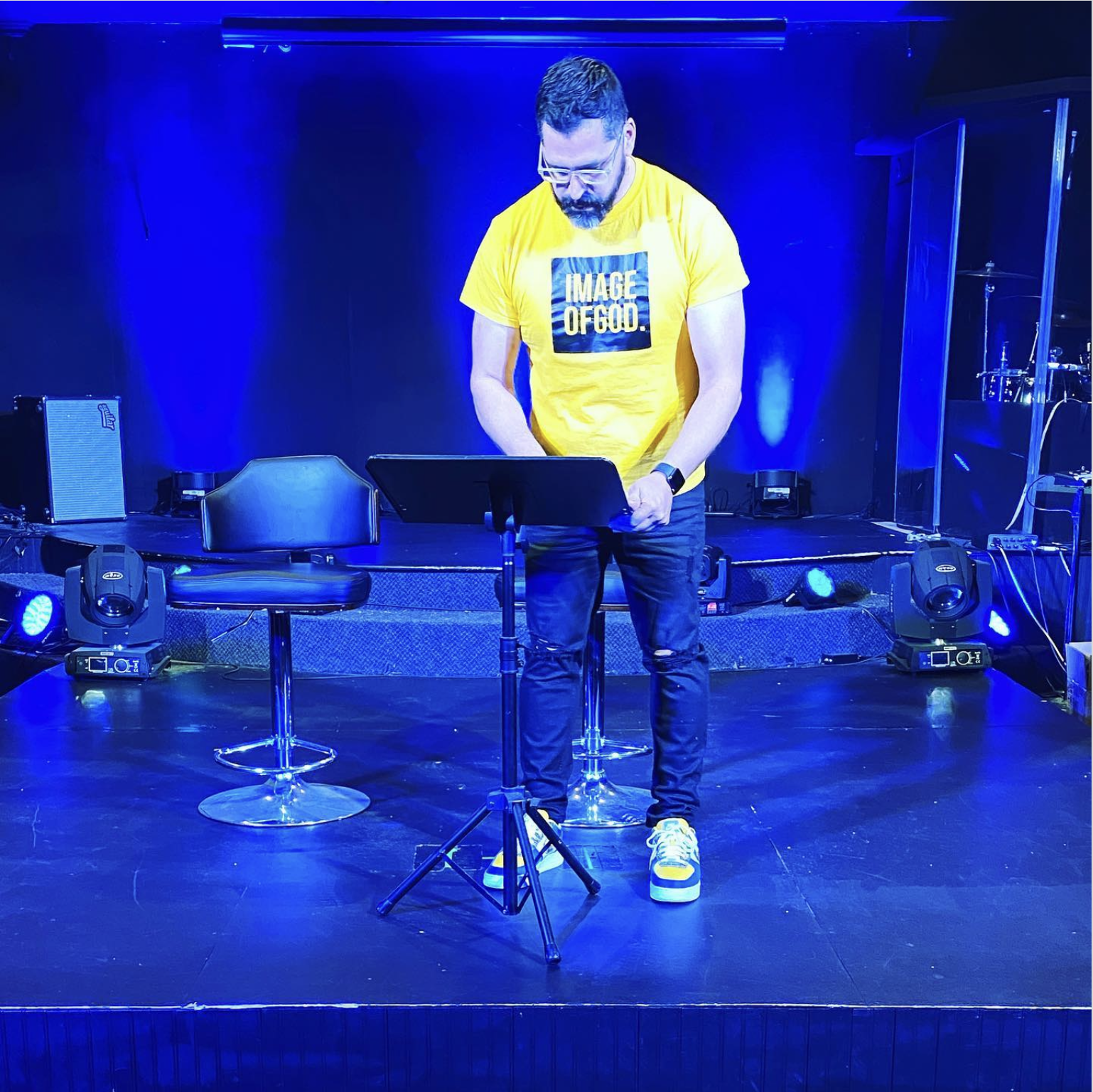


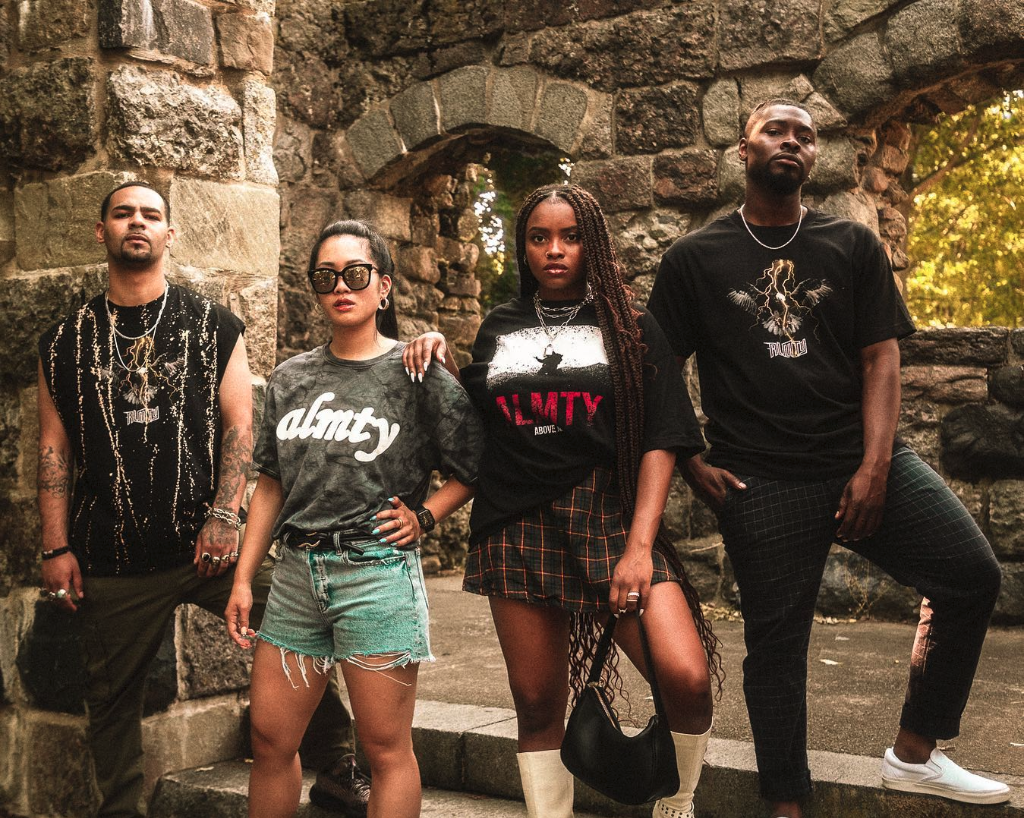
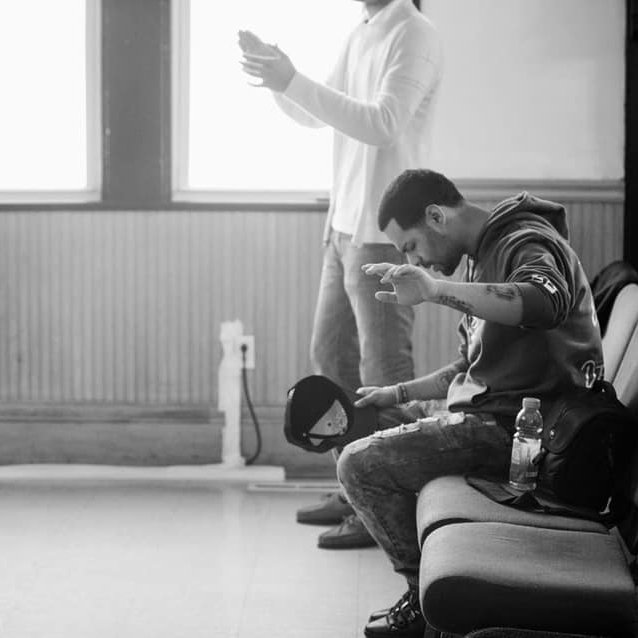
They don’t always feel seen. Many feel like spiritual orphans in a world that neither understands nor values their faith and a Church that neither acknowledges nor appreciates their gifts.
Some church leaders do see them. They say Christian artists are an untapped resource.
Pastor Valerie “Val” Copeland, pastor of Neighborhood Church of Dorchester, said God has given every Christian gifts and skills for a reason.
“Christian creatives sit in church without their gifts being used, without space being made for their gifts, while they sort of dry up on the vine,” she said. “If we need a singer or guitarist or drummer, we'll search them out. But where's the imagination to say if they are gifts that God has given you, then it's incumbent upon us to figure out how to make room for them?”
“Christian creatives sit in church without their gifts being used, without space being made for their gifts, while they sort of dry up on the vine.”
It hasn’t always been this way. Historically the Church has been a driving force for the arts, integrating it in its worship, teaching, and architecture. In some places marked by post-Christianity, the churches may be empty but their beauty continues to bear witness.
The arts have the power to speak to people in ways that sermons can’t. The Christian creatives sitting in the pews could help address some of the biggest challenges facing churches today. This is an opportunity for churches to support creatives while at the same time mobilizing them for mission.
In an effort to help churches do that, we connected with Christian creatives and pastors to learn from them how churches can support and equip the artists sitting in the pews.
A creative God
Christian creatives say they draw inspiration from the Creator — and that churches should too.
“God is the first artist,” Pastor Val said. “The beauty of art and the drama of art calls our hearts to something greater than ourselves and reminds us that God’s design is intentional: the way that he uses color, the way that he uses the drama of thunder and lightning, the way that he calls us to be creative in how we love the world.”
God’s creation is not only beautiful, it's also unique. He made humans in his image to reflect his creativity. For Michael “Mike Mack” McPherson, founder of Elevation Conference, the rich diversity of God’s created order is the “essence of creativity.”
“God is the first artist. The beauty of art and the drama of art calls our hearts to something greater than ourselves and reminds us that God’s design is intentional.”
“He could have easily made every single bug the same — every single ladybug could have the same amount of spots, and he decided that he would splatter and make them all look so different and so unique,” Mike Mack said. “But then we come into the Christian world and we look at art and music and we're like ‘It's supposed to sound like this.’”
Creatives embrace the call to “sing a new song.” They thrive on expressing themselves through their work, improvising to bring something new out of the old.
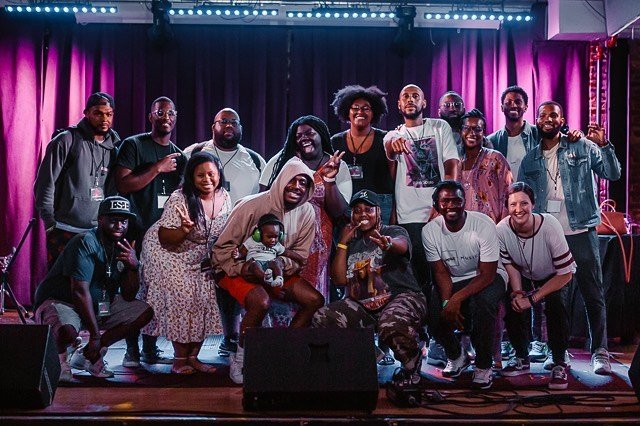
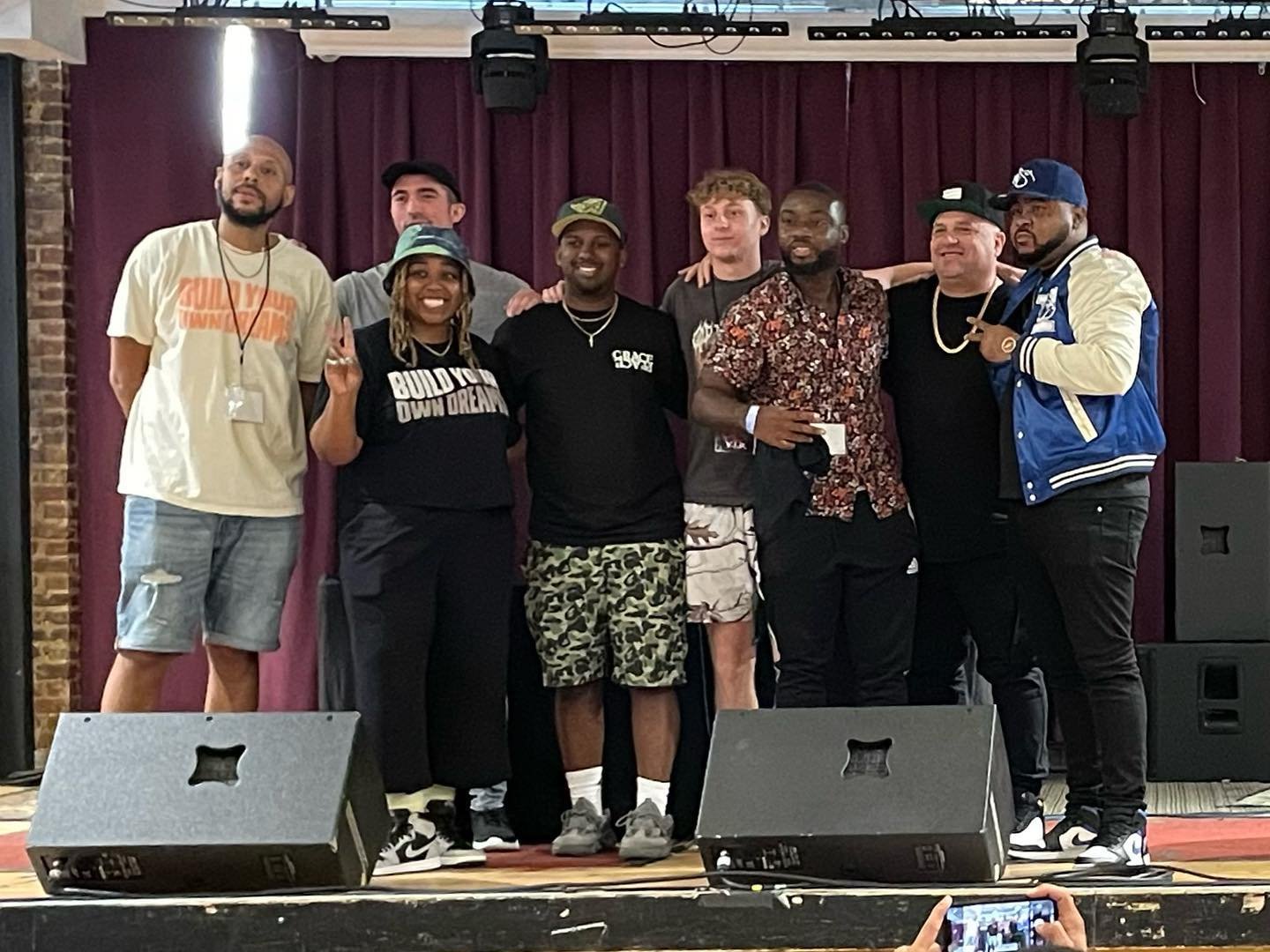

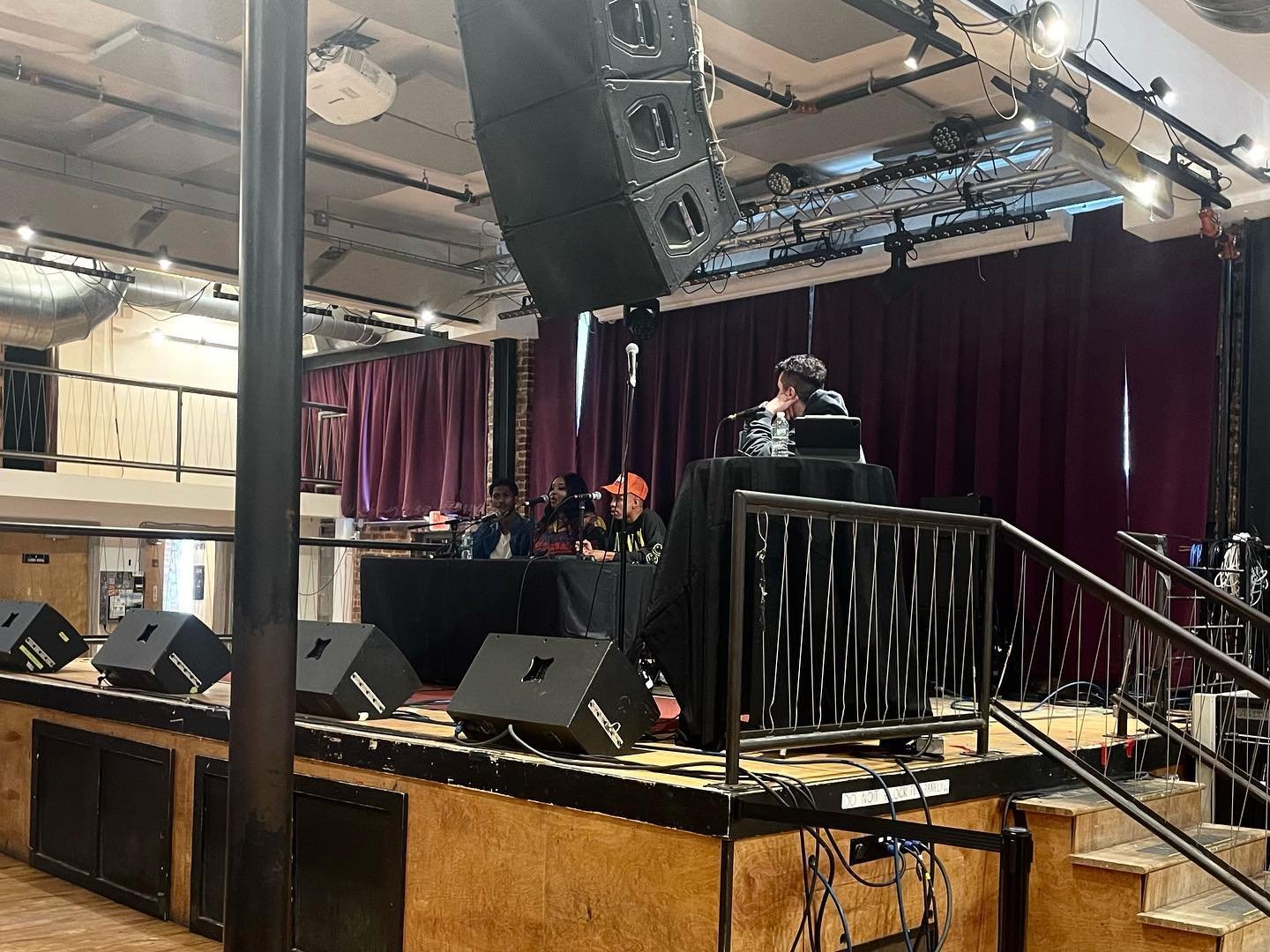
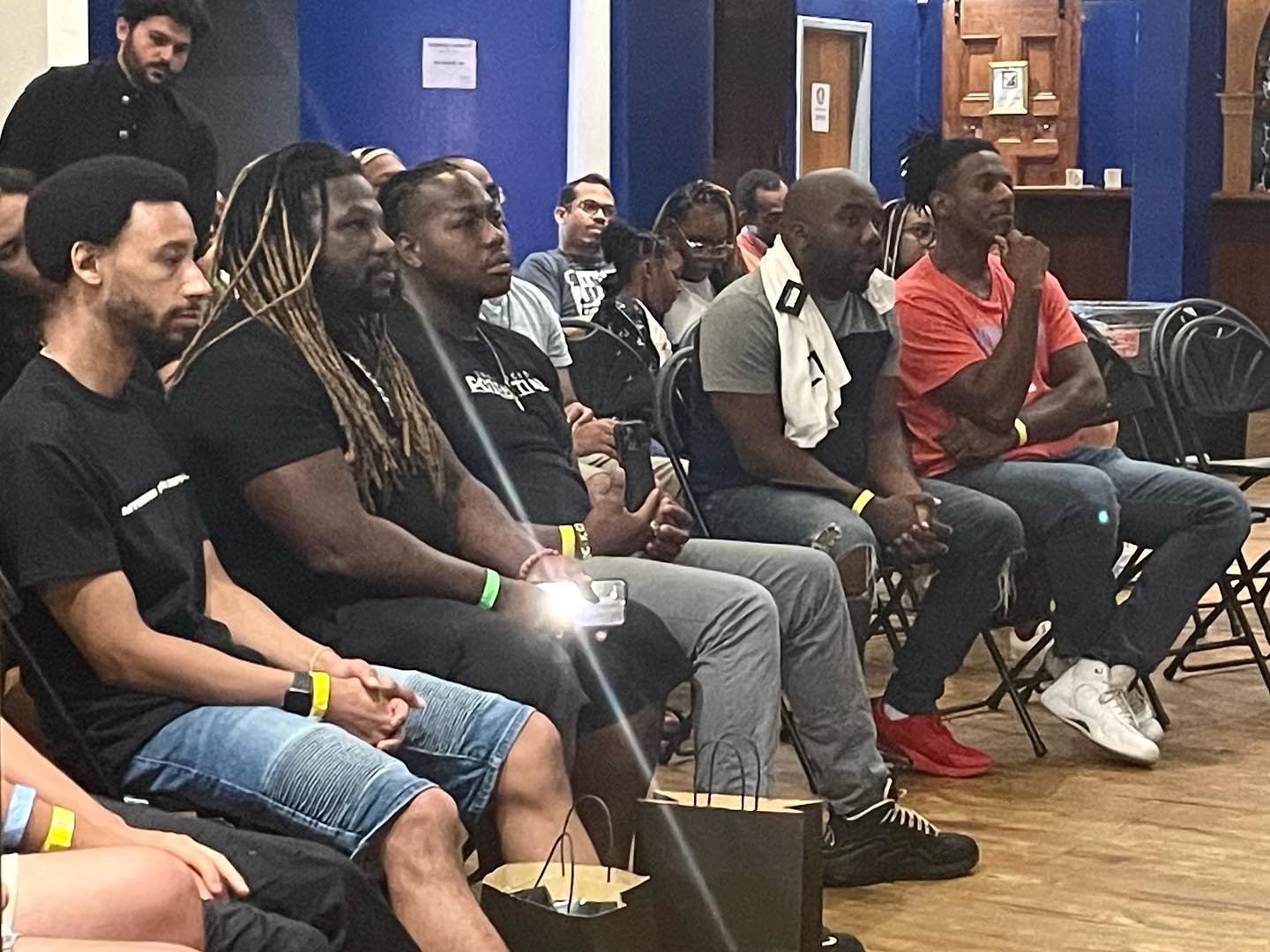
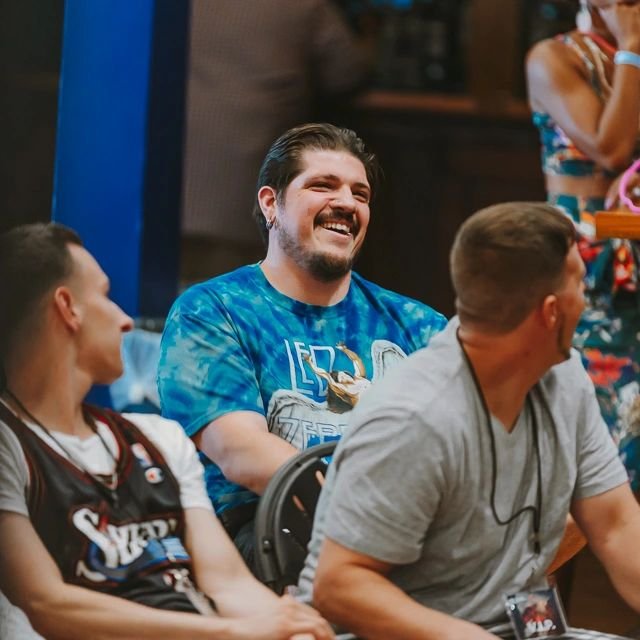
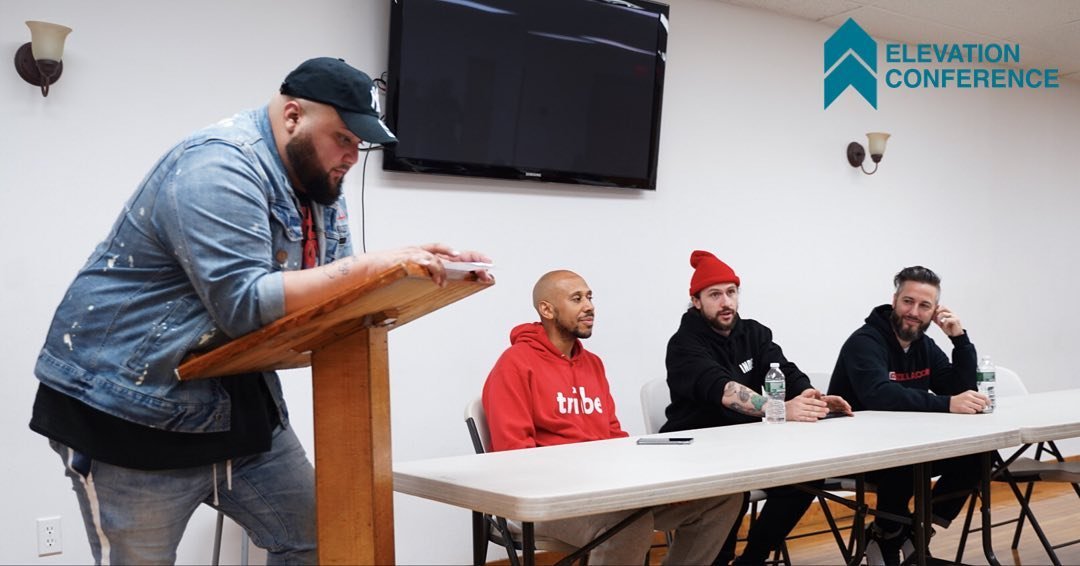
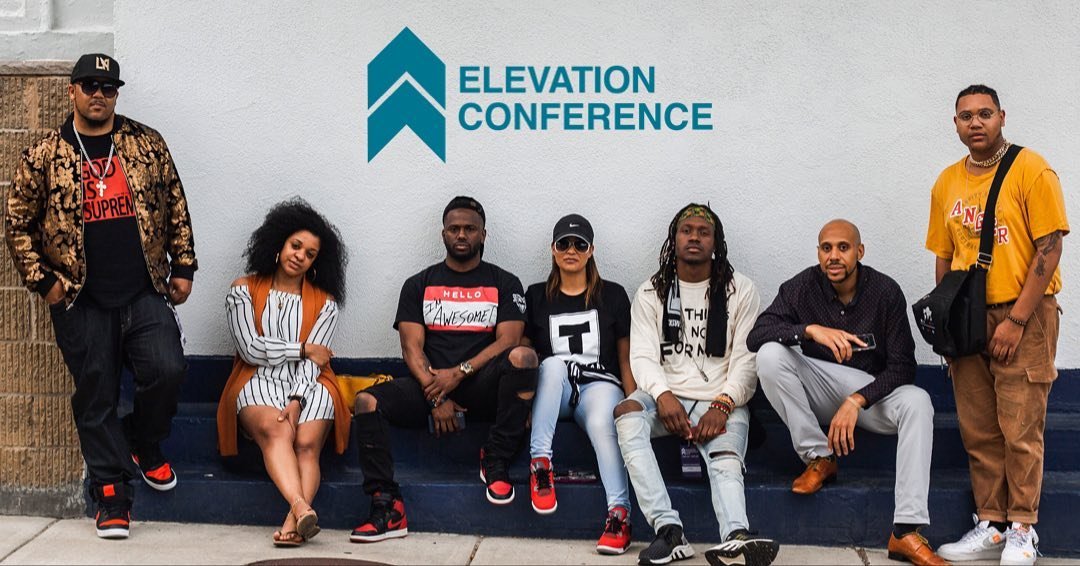
Many creatives feel that a lot of churches function exactly the opposite way. The familiarity of traditions provide safety and stability; however, if churches hold them too tightly there can be little room for something new. The tension between creative expression and commitment to tradition can often be at odds.
“The overarching problem is that the Church is terrified of so much. The Church creeps around so much,” Mike Mack said. “The Church still has — despite what Paul said — a 'taste not, touch not' mentality (Col. 2:20-23) about almost everything that could be considered sin and is probably not actually sin.”
Christian creatives often face the impossible task of producing art that checks all the boxes for churches theologically and for the world aesthetically. Placing restrictions on artists that don’t concern the core message of the gospel chokes creativity.
A creative Church
The COVID-19 pandemic forced churches to get creative. The crisis compounded the new challenges with long-standing issues that surfaced and threatened division. Many people did not return to worship services after lockdown measures were lifted, and increasingly younger generations don’t want anything to do with the institutional church.
To minister in this new reality, Pastor Val said “our missiology has to shift.”
“I talk to a lot of folks who are just really hanging onto the Church by a string,” she said.
Christian ministry is often geared to preaching that appeals to the head, but it is missing out on the power of the arts to reach the heart.
“This is definitely an area that the Christian Church has fallen asleep on,” Pastor Val said. “We've sort of limited God to the area of our brain: think about it, write about it, talk about it.”
Pastor Valerie Copeland
But with the state of the broader culture, this will not be enough to communicate the gospel effectively to many people. The call of Jesus’ Great Commission is to “go” to people instead of telling them to “come” to the Church.
“I think too often we're waiting for people to meet our criteria — and it's completely backwards,” Pastor Val said. “This idea — I'm willing to do whatever it takes to tell you about God: a God that loves you, a God that inspired all of this beauty, and a God that finds beauty in you — I'm willing to do whatever it takes. You've got to be willing to do whatever it takes.”
Pastor Val said Grace Chapel’s passion week display was a moving example of how God can use the arts to “preach” the message of the gospel. The display included beautiful art installations with quiet spaces for reflection.
“The last installation is just an empty tomb, and I can't tell you how that thing just brought me to my knees,” she said. “I've heard many sermons about the empty tomb that didn't bring me to my knees. Seeing that empty tomb brought me to my knees.”
In addition to proclaiming the Good News in different ways, Pastor Val said Christian creatives have the opportunity to help heal the fallout from broken or false views of God. Images have power, and when they’re not created to look like the people they’re meant for, it can have a lasting negative impact. Creatives can step in to redirect the image and narrative that disaffected people have of God.
“Give them platform, stop hiding them, stop discouraging them, be more encouraging, give them opportunities to present — especially on Sunday mornings. If you look around your congregation, there’s probably people who do all sorts of really cool, really unique things.”
“One of the ways that Christian creatives can be helpful is in bringing these important issues to light but also in correcting the narratives that have been associated with these images, and redirecting the narrative towards what is true and who we are as Christian believers,” Pastor Val said.
For churches that want to take the risk and change their approach to ministry, it will likely mean a painful period of adjustment, she said. But church leaders who worry about how to reach the unbelievers in their community may not realize that God has already provided them with the answer right there in the pews.
God has equipped Christian creatives in their congregations with gifts to preach the beauty of the gospel. But they must be empowered, not exploited.
“Give them platform, stop hiding them, stop discouraging them, be more encouraging, give them opportunities to present — especially on Sunday mornings,” Mike Mack said. “If you look around your congregation, there's probably people who do all sorts of really cool, really unique things.”
Creatives have their own ideas for how churches can begin to support them as they live out their calling to glorify God. They stress that this will mean a change in the usual mindset and approach to ministry. Of the many ways they can help, churches can start praying and thinking creatively about how they approach their finances, building space, and ministry staff.
Creative with support
One of the basic ways churches can begin to think creatively about equipping the artists in their pews is by supporting them financially.
An economy shaped by modern technology and social media has conditioned us to expect things to be free. Coupled with the tendency in churches to spiritualize volunteerism as Christian service, this dynamic puts Christian creatives in a difficult spot. They’re often expected to use their gifts and skills for free. And not complain about it.
“One of the things that does concern me is the inability for creatives, in general, particularly Christian creatives — particularly Christian creatives of color — to make a living,” Pastor Val said.
“We’ve got to start seeing people as an investment in the kingdom versus their output as the investment.”
It’s not fair the way churches impoverish Christian artists as they pursue their ministries, Pastor Val said.
“Christian creators contribute so much more to our economy than they get back,” she said. “They contribute so much more to the economy of the Church than they get back.”
When churches exploit the work of their people, it compromises the Church’s witness to the world.
“Justice starts in the house of the Lord. We cannot be out there fighting for justice and defending the rights of the poor and the exploited and then be exploiting people within the house of the Lord,” Pastor Val said. “We've got to start seeing people as an investment in the kingdom versus their output as the investment.”
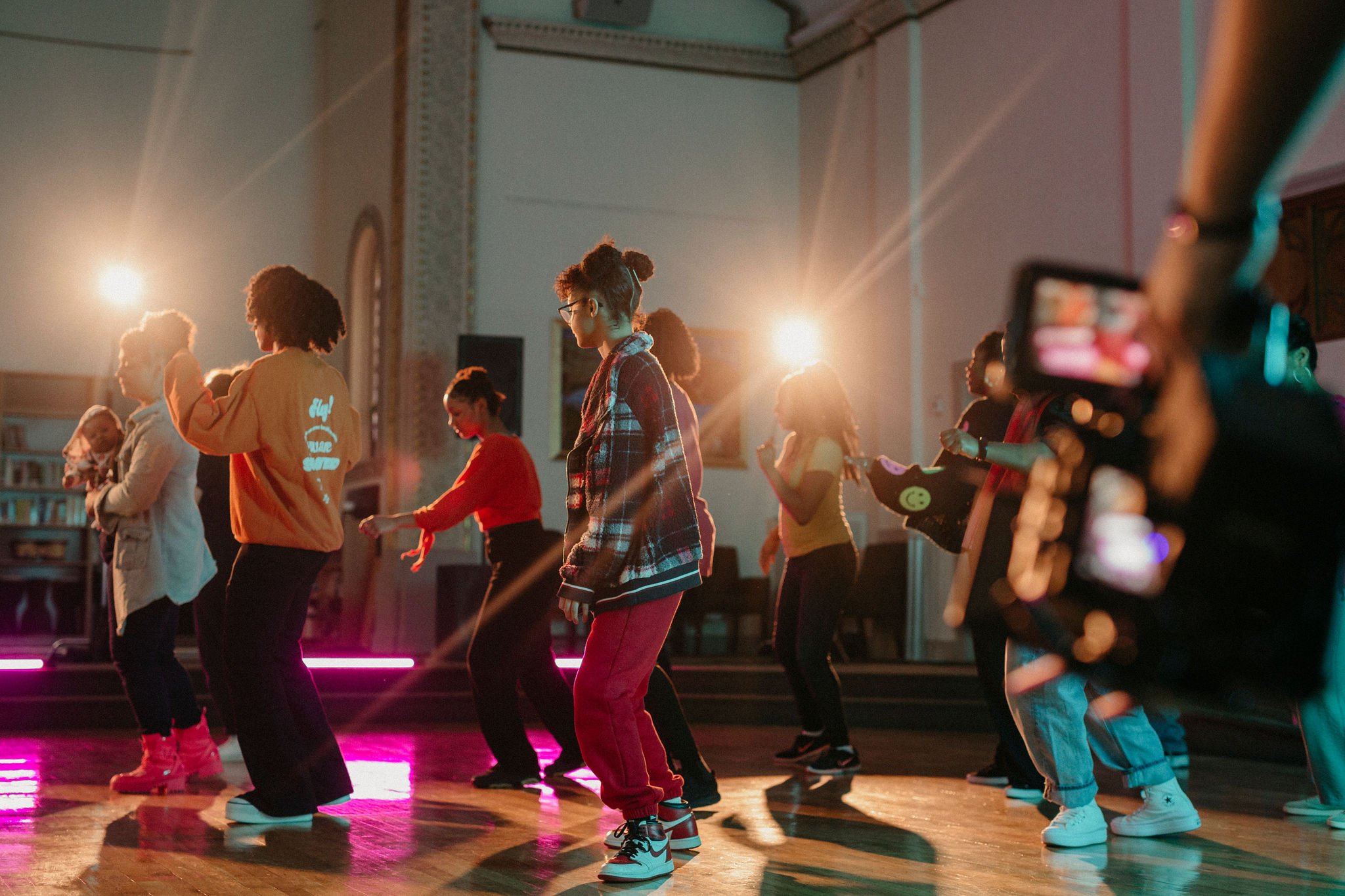
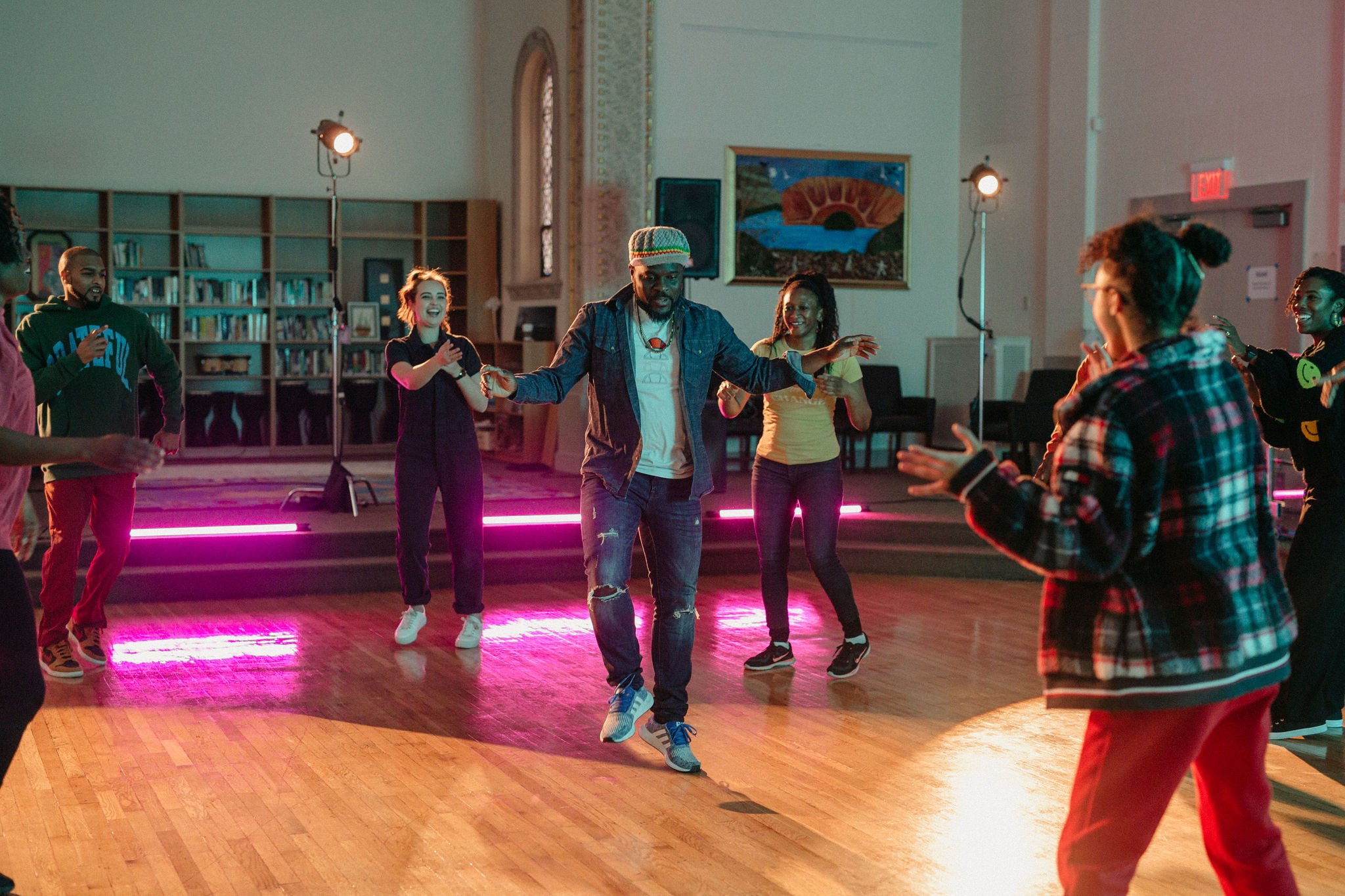
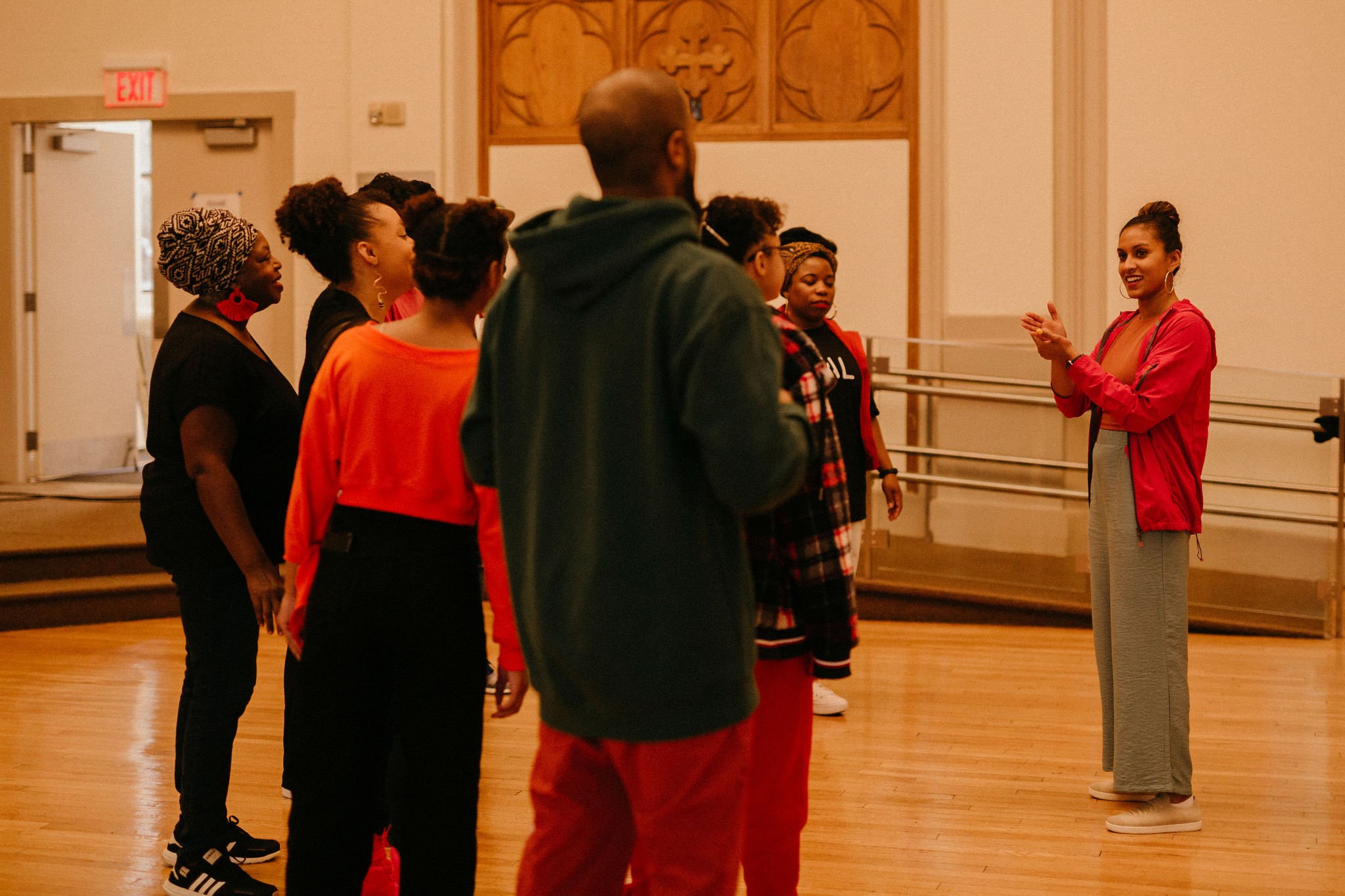
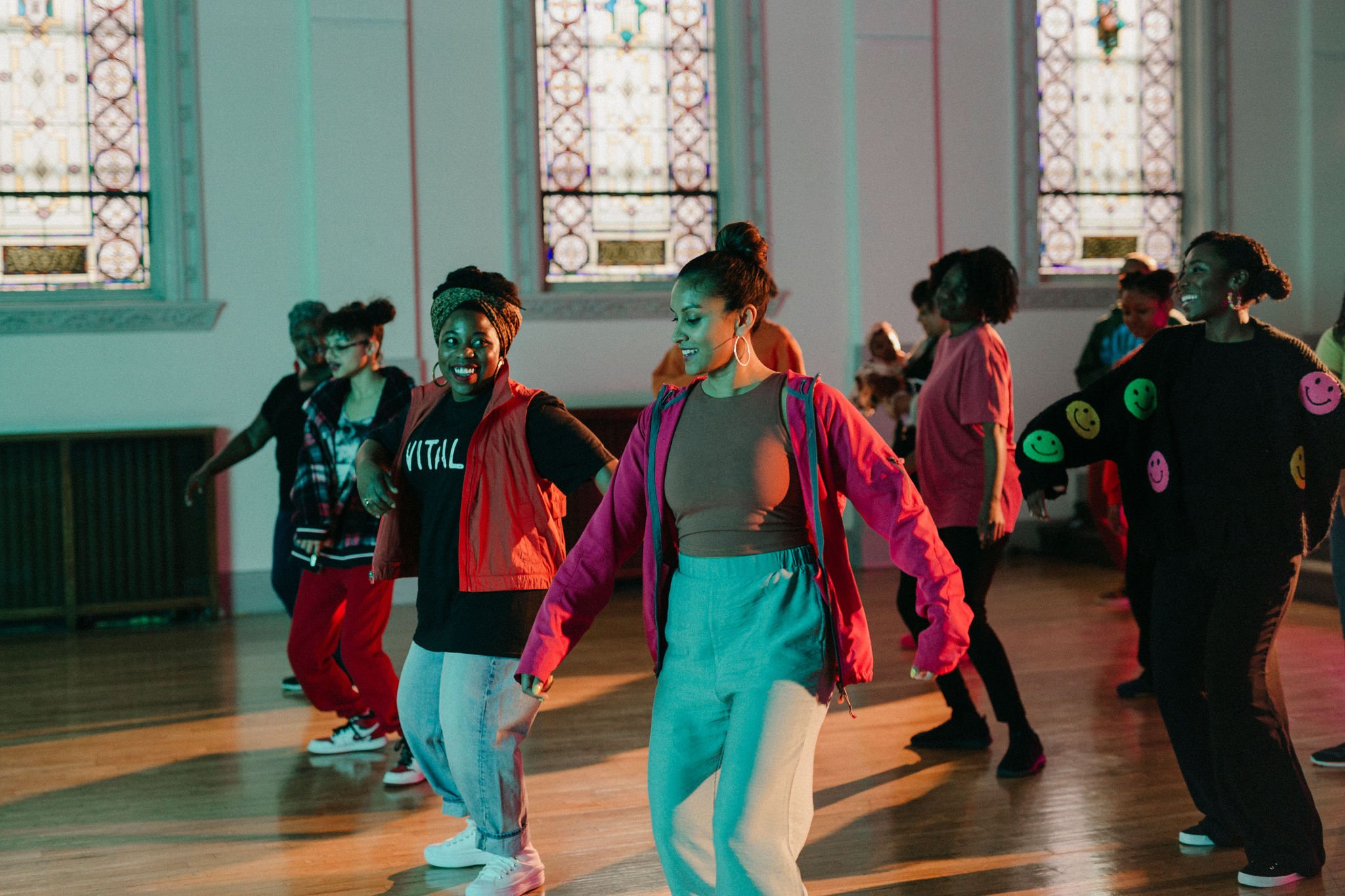
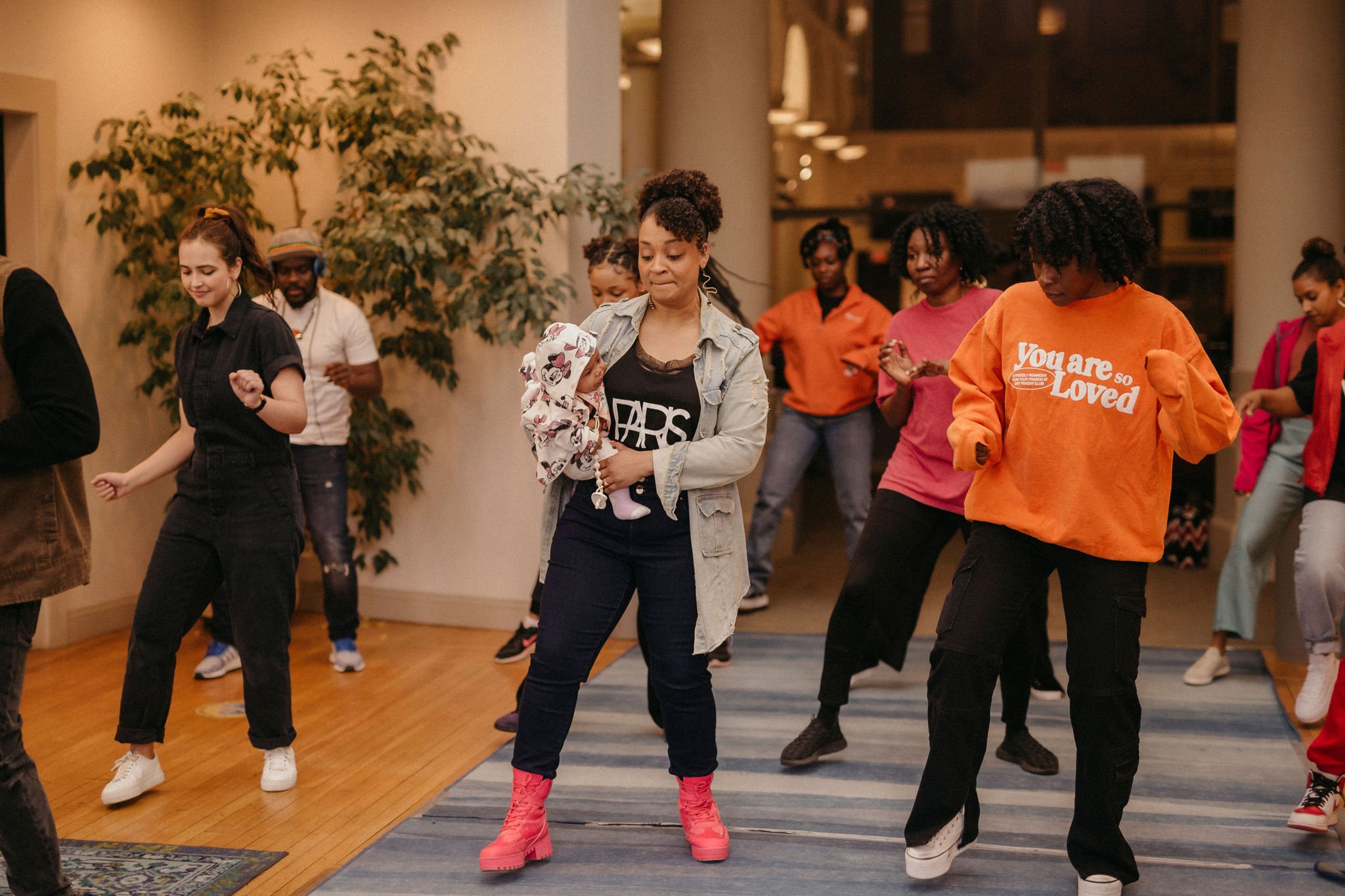
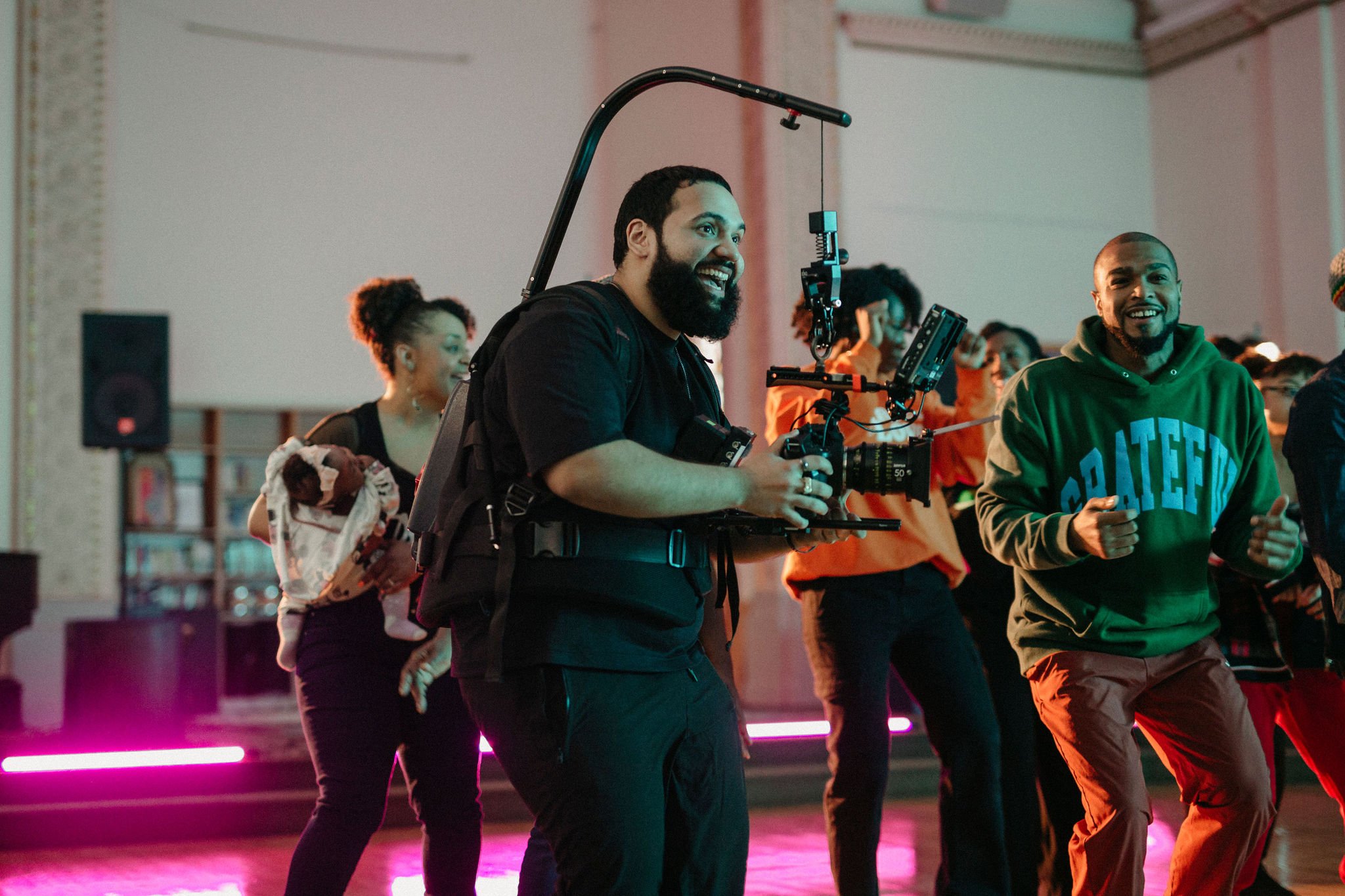
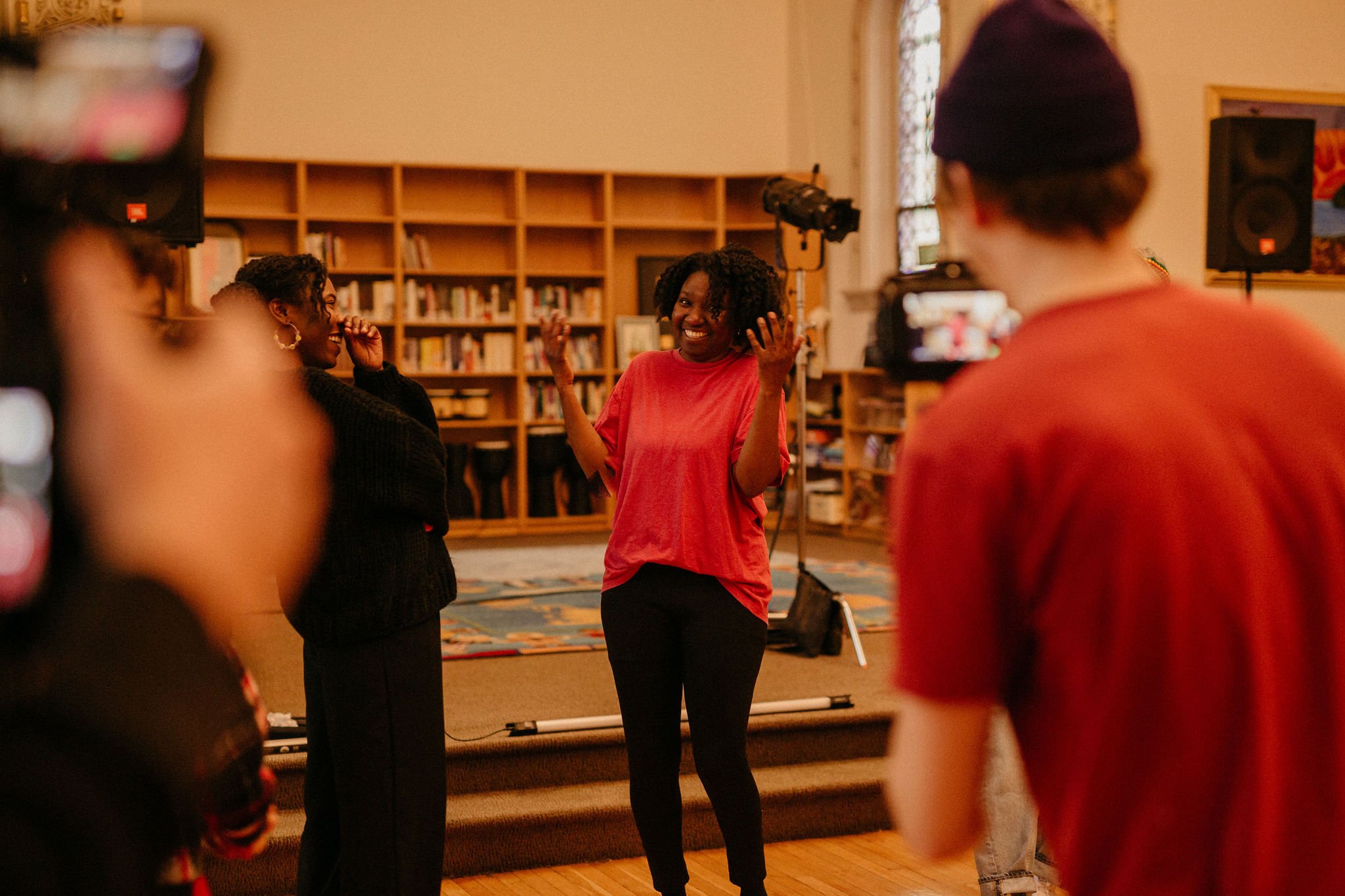
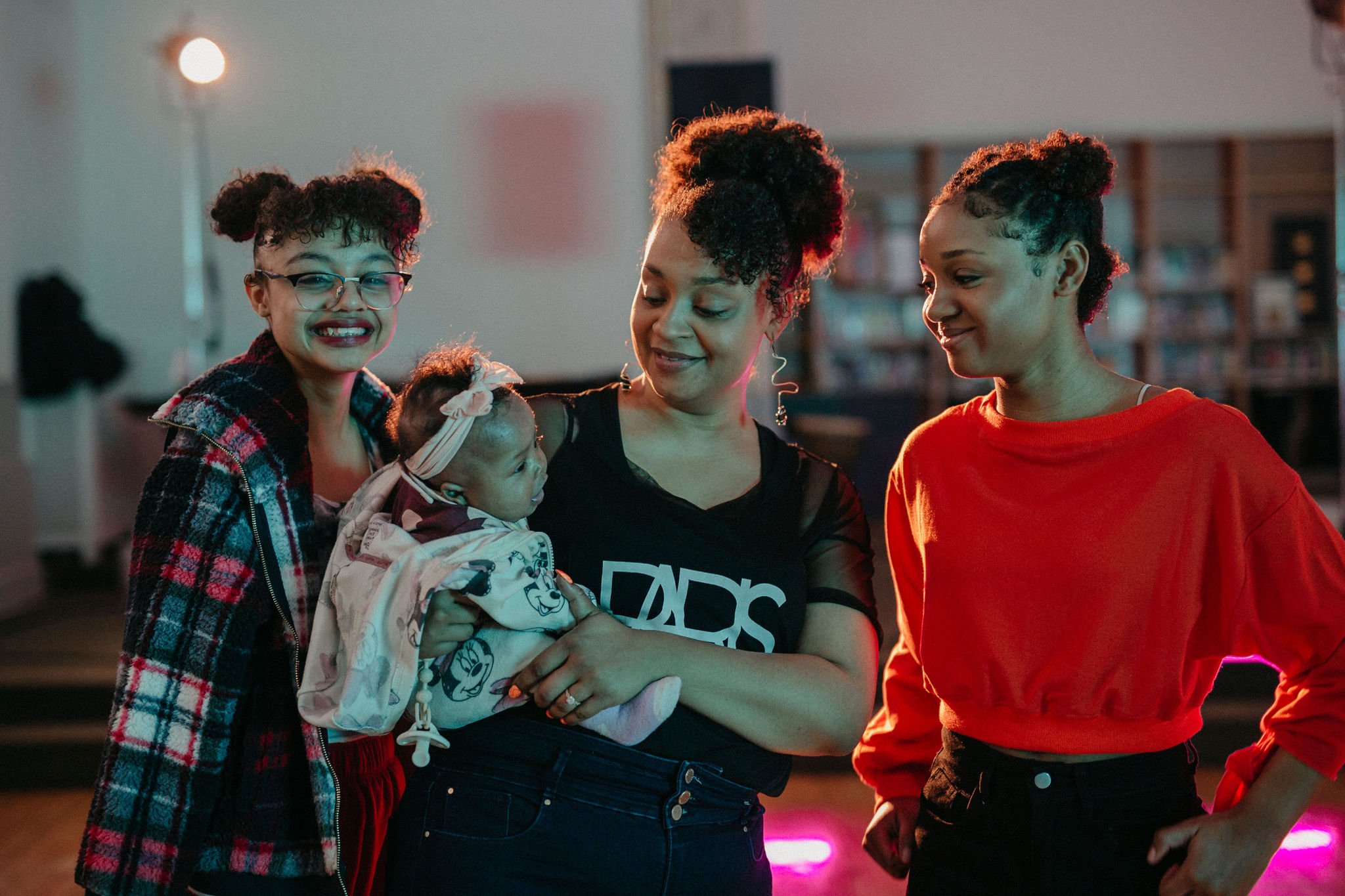
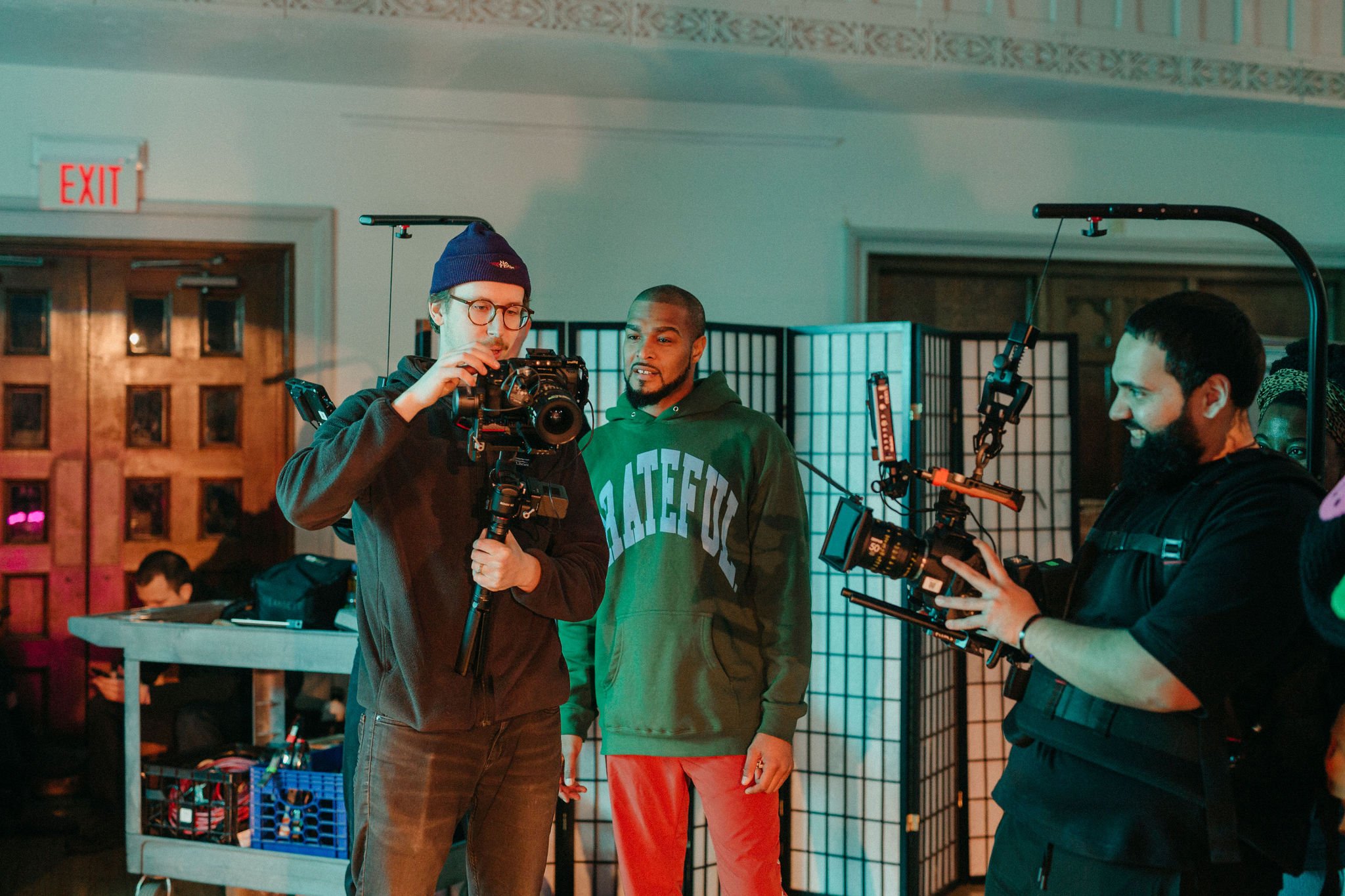
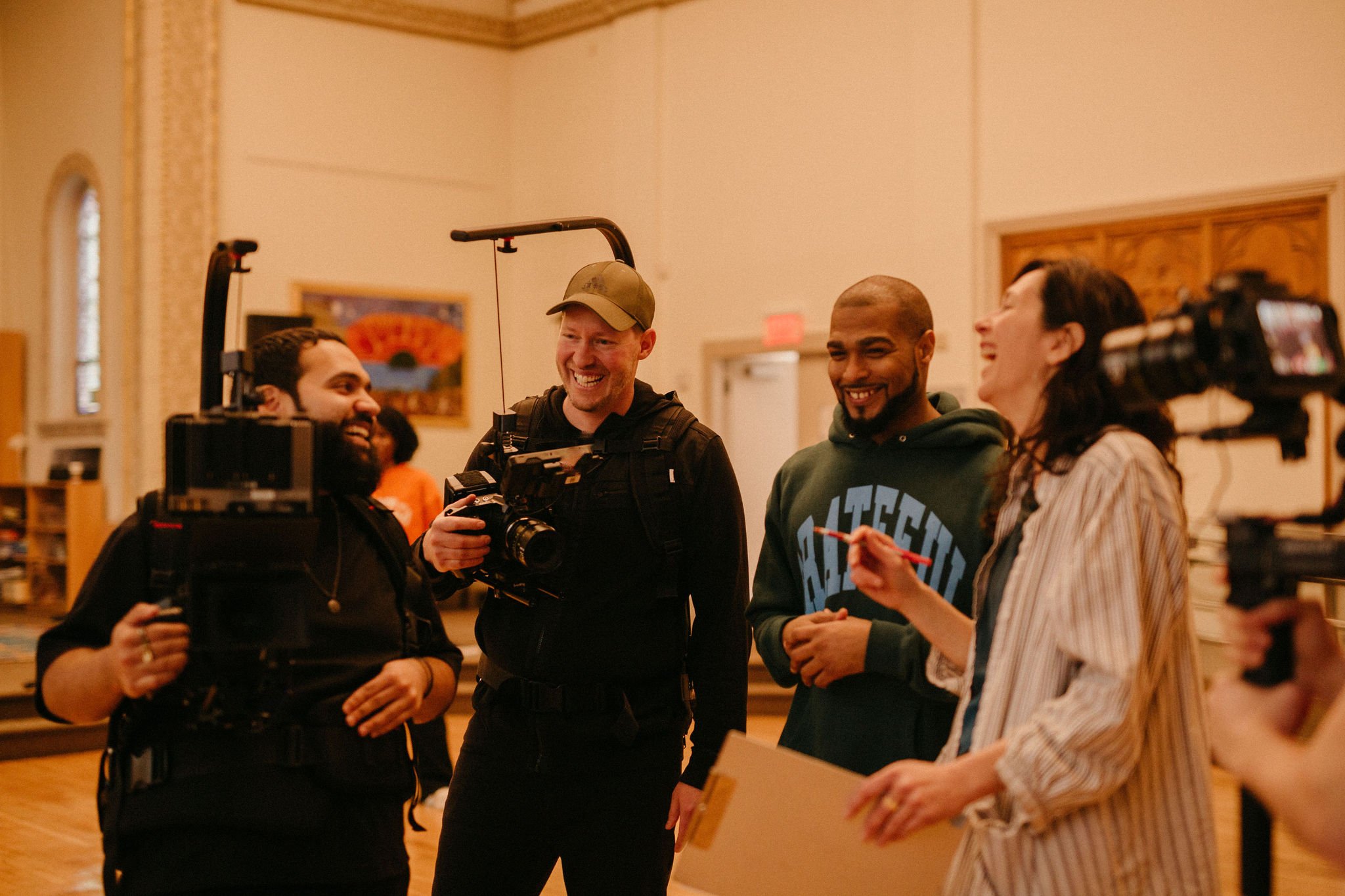
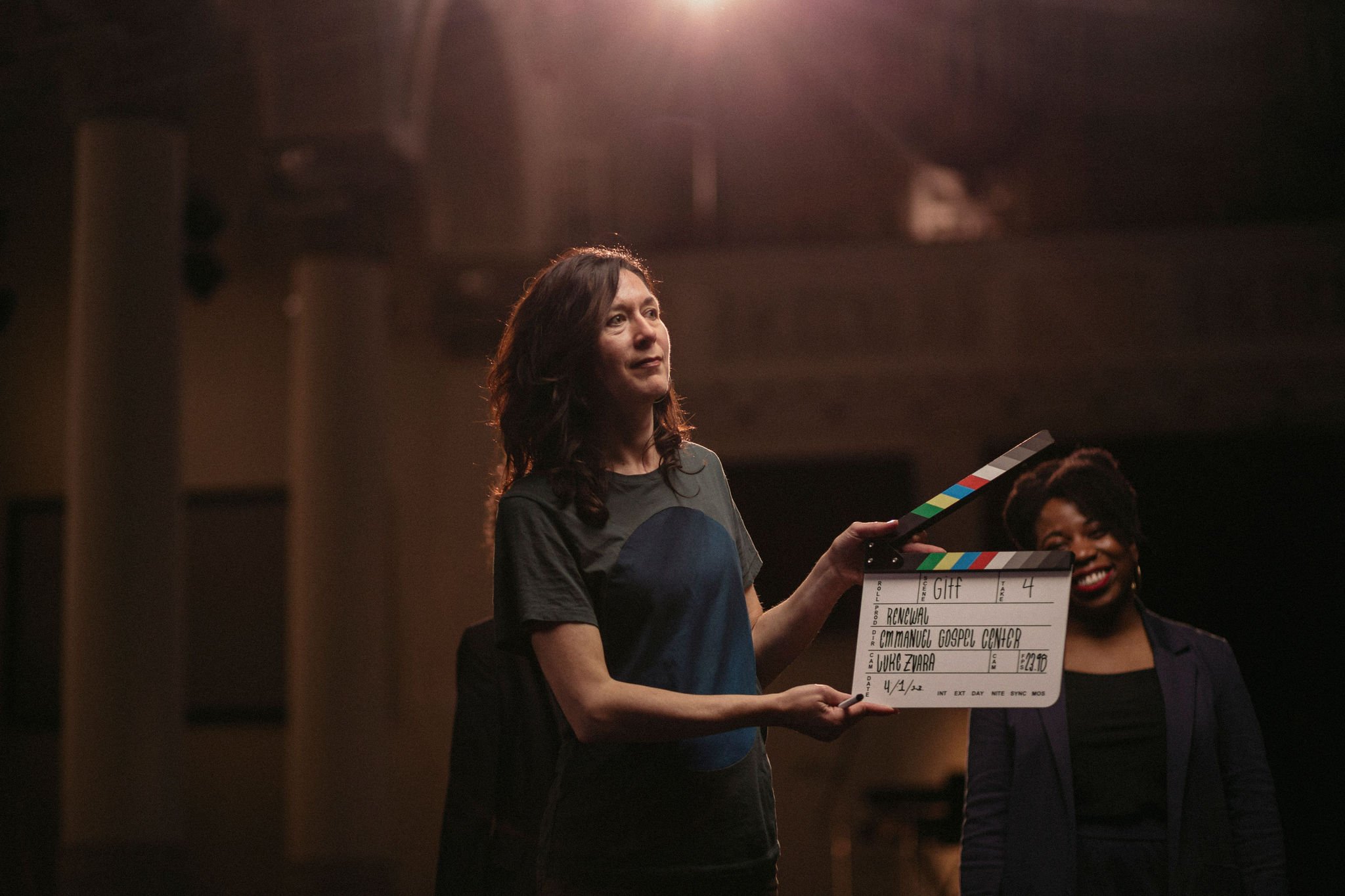
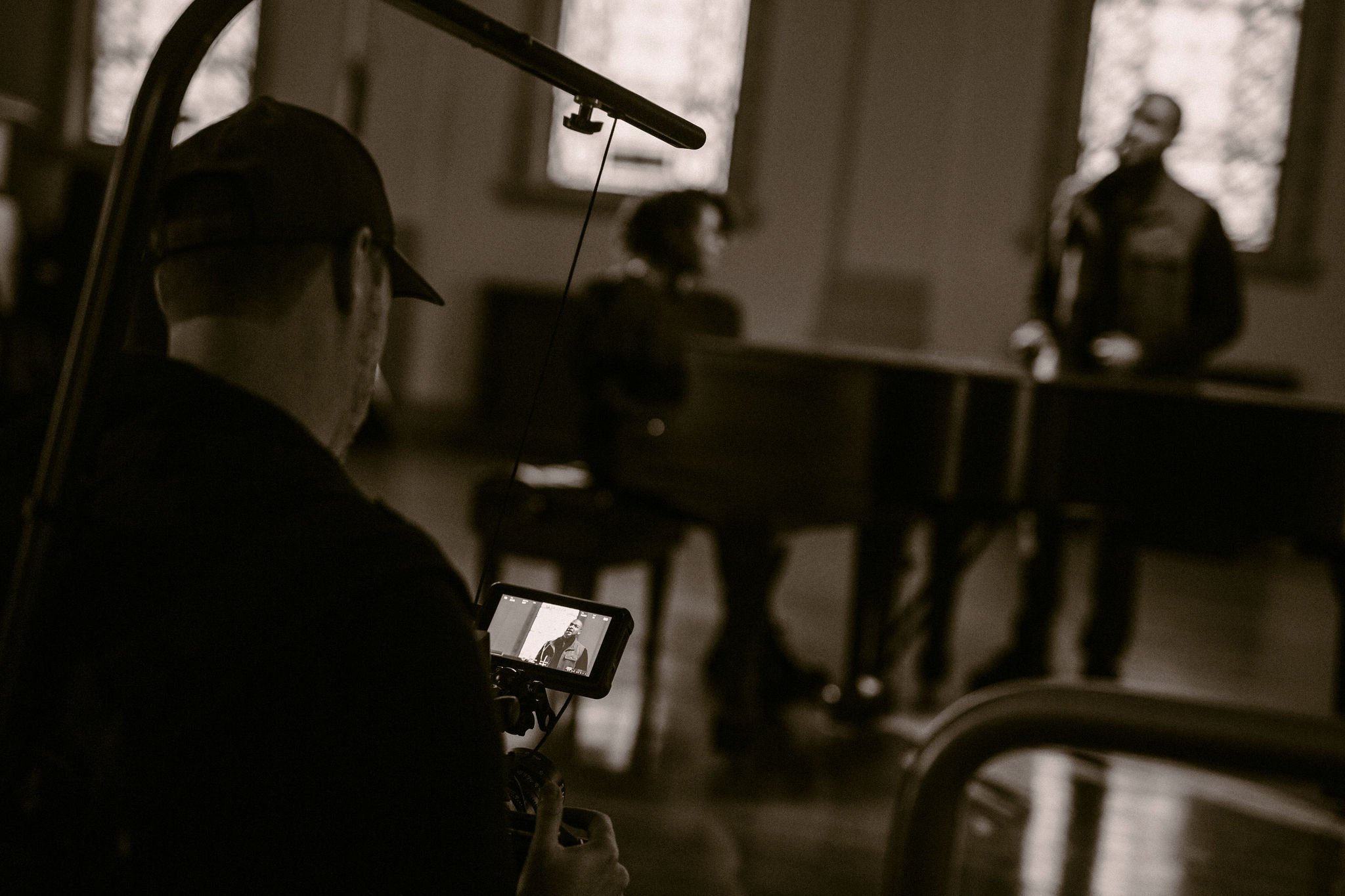

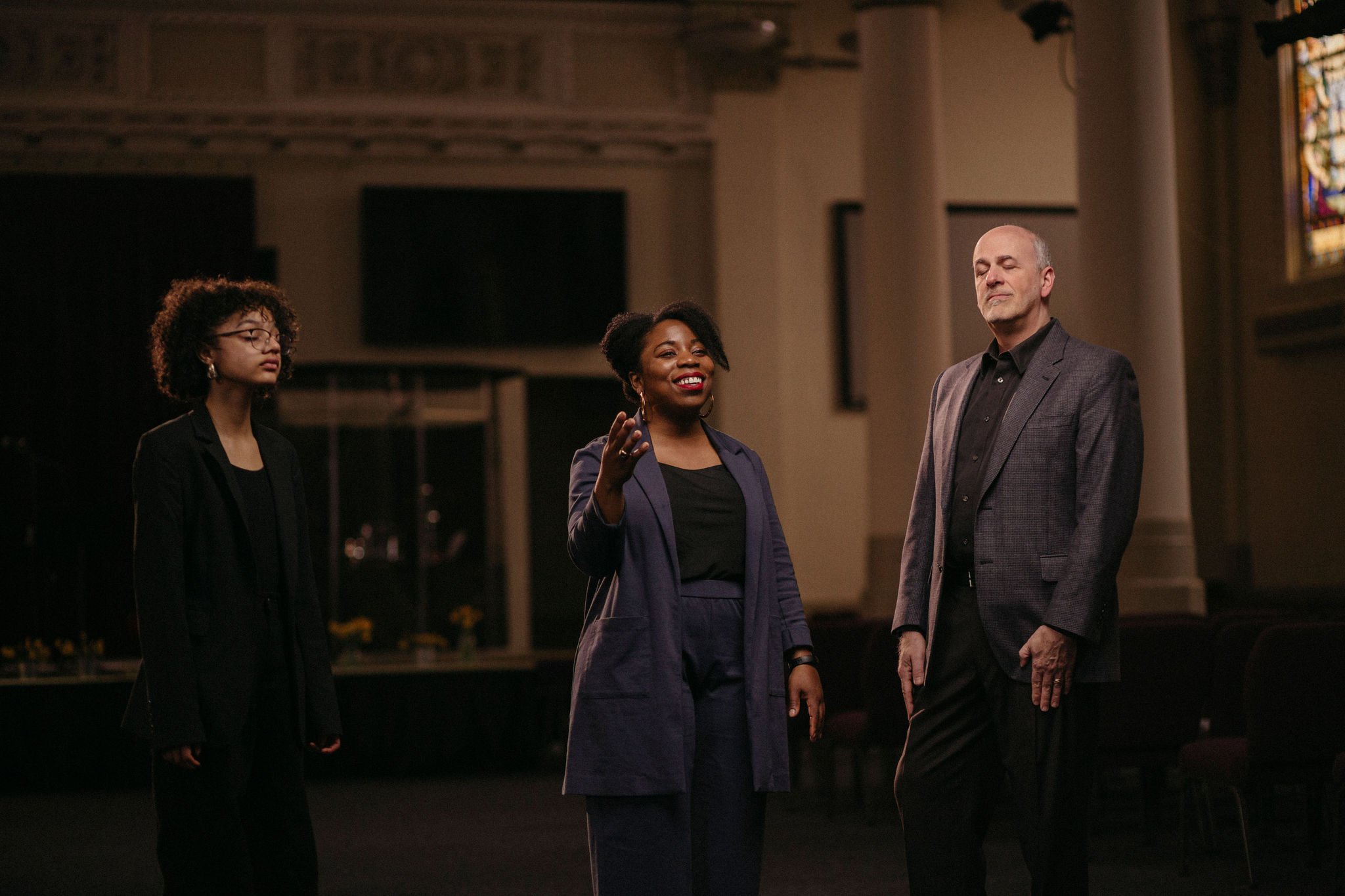
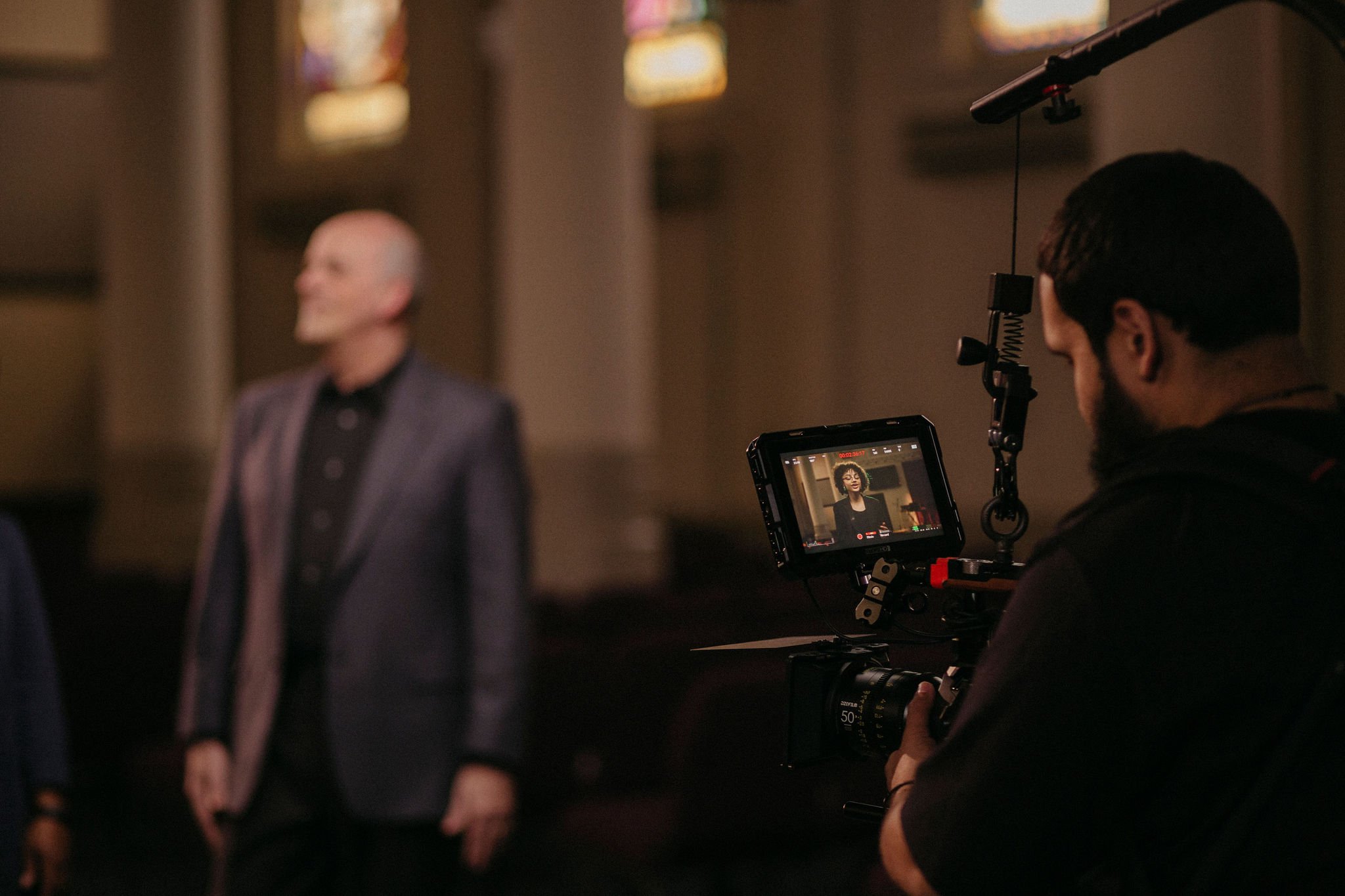
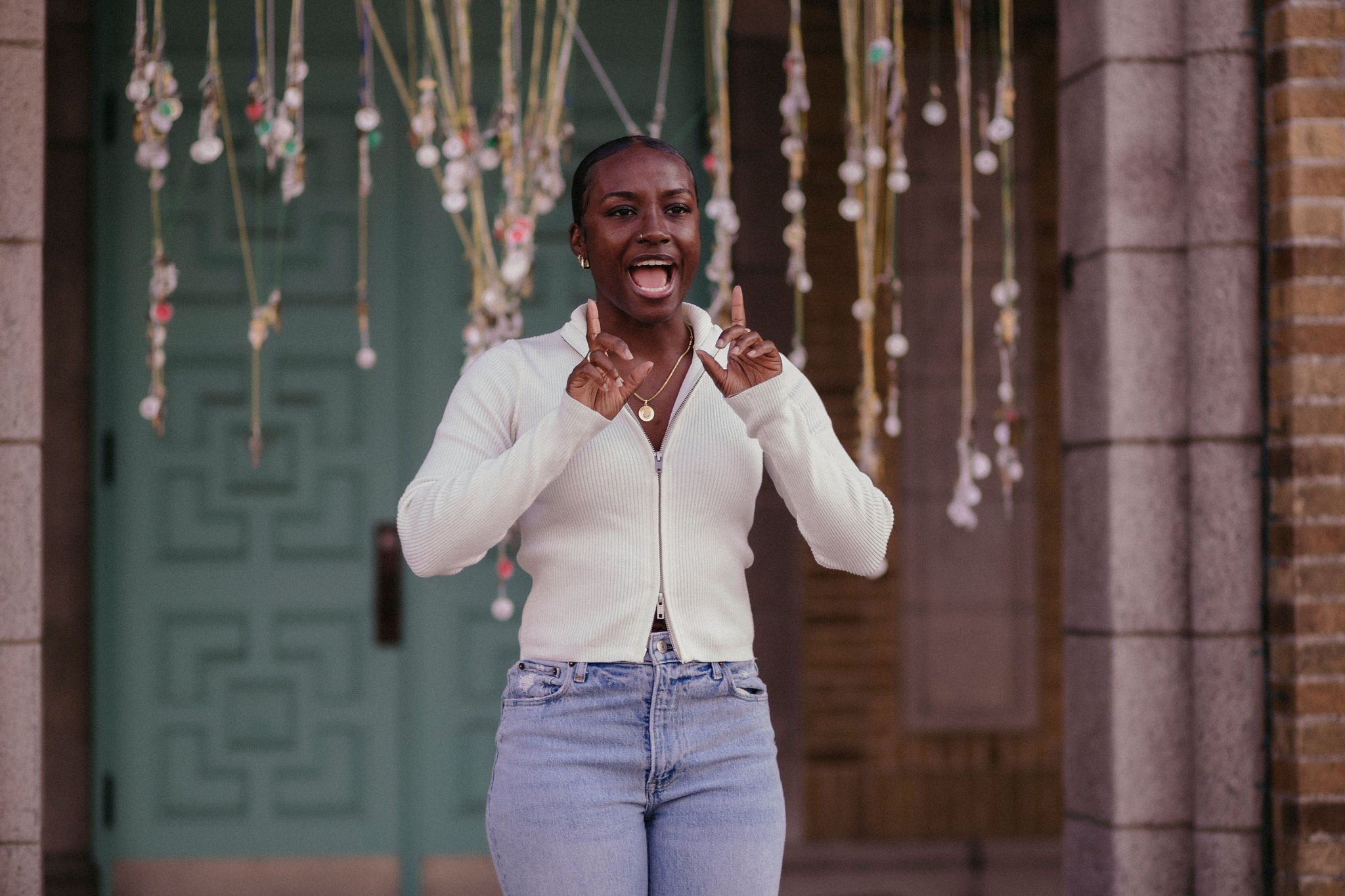

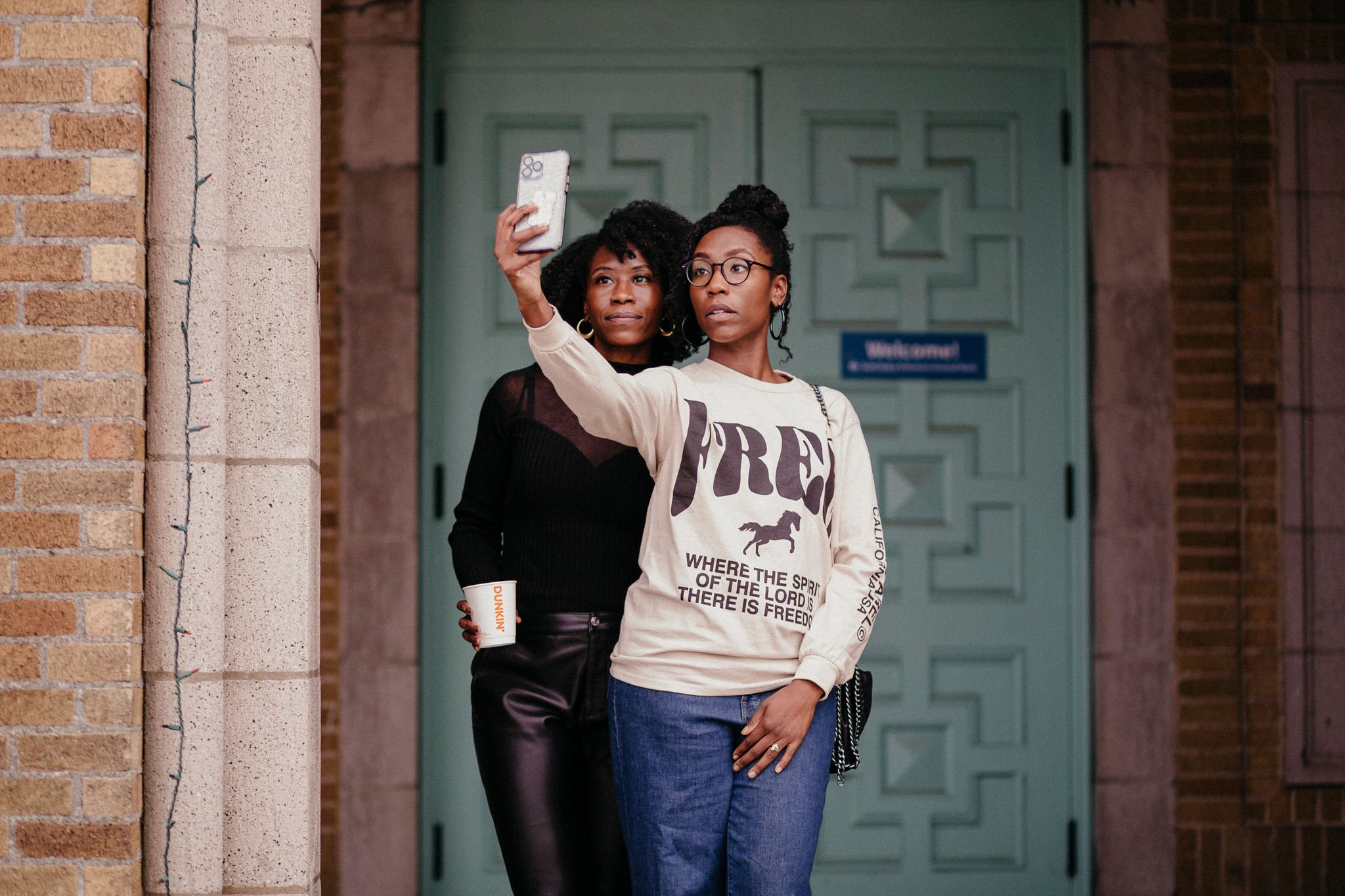
Individual Christians can also think creatively about their tithing and giving. Mike Mack is confident that there are believers in the area who want to “make sure that New England’s a hub for artistry” and that Christian creatives have the tools and access they need to thrive.
“Somebody out there has that heart, but they've probably been told that the only way that you can give is to give it directly into the Church,” he said.
Being open to think creatively when it comes to finances is an opportunity to walk in step with the Spirit and partner with what God is doing on the ground.
“Are you listening to the voice of God? Do you ever wake up in the morning and say, ‘What does my city need? What do I gotta do?’” Mike Mack said. “Do you ever see somebody who's a creative and just think to yourself, ‘Wow, this person could really use assistance. I believe in what they're doing — let me help them out’?”
Creative with space
Boston is not kind to Christian artists and creatives looking for event space. They can have a tough time finding venues that will meet their needs at an affordable rate.
Many churches have significant real estate footprints with resources that could be used to support the work of creatives. Stewarding those resources well has kingdom implications.
Mike Mack said that along with everyone else, church leaders will one day have to give an account for what they received and what they did with it — “especially the stuff that we prayed for.”
“You look around and it’s like, what resources is the church sitting on? What young, up-and-coming rapper is actually the greatest preacher in your church, and you’re just not utilizing him because you don’t like the way that he does it?”
“‘Lord, I need this, please give me this.’ And he's like: ‘You just want it for yourself, you wicked servant. You just want it so you can hoard it. Why should I give it to you?’” Mike Mack said. “Somebody's praying for their building fund right now — got money coming in from everywhere — and have no plans of using it for the people who gave to it.”
Churches can use their spaces to host concerts, exhibits, and other artistic events. They can work collaboratively with creatives to further the kingdom in their local communities with the use of their building space.
Creative with staff
Beyond physical assets and resources, churches can build out their ministry staff with Christian creatives who feel called to serve in the church.
“Put the creatives in your church on staff. Pay for their position,” Pastor Val said. “Put people on staff so that they're actually able to do what they need to do and also support the life that they need to live.”
Bringing creatives on staff may not come intuitively to some church leaders. It may mean interrogating our ideas of what a church staffer looks like.
“You look around and it's like, what resources is the church sitting on?” Mike Mack said. “What young, up-and-coming rapper is actually the greatest preacher in your church, and you're just not utilizing him because you don't like the way that he does it?”
“Church” may not look exactly the same anymore. Christian creatives may have interests that don’t naturally align with the way many churches usually approach the arts. They might not play a musical instrument or want to lead the children’s Christmas play.
“It’s glorifying God just in a different approach. I think once people can realize that, they’ll definitely leave more space for more opportunity for creatives like myself and others.”
“We have to start — and I'm hoping even at my church — making room for the ministries — no matter how unique they are — so that this is a place where they can flourish,” Pastor Val said. “This is a place where we will financially invest in that ministry just like we're going to invest in the summer camp, the food pantry, the marriage retreat.”
Pastor Val said church leaders should recognize that creatives are also theologians. They should invite creatives to look for ways they can visually bring to life what is being taught or preached from the pulpit.
“One of my dreams is that someone would do a dramatic piece of the encounter between Jesus and Satan in the desert, where they have this word battle, and Jesus literally drops the mic at the end. It is done. It's a wrap,” she said. “It's so dramatic. This interaction between Jesus and Satan is intense, it's high stakes. And I'm like, why hasn't this been made into a dramatic piece yet?”
Creatives like Acevdeo are confident churches can make use of them and support them at the same time. He encourages creatives to be plugged into a local church community, rooted and grounded in Christ alone. He believes this spiritual vitality will help shift hearts and minds within congregations to make room for artists with unique gifts who relate in different ways.
“It's glorifying God just in a different approach,” Armani said. “I think once people can realize that, they'll definitely leave more space for more opportunity for creatives like myself and others.”
WATCH: Church & Creatives
Have you ever experienced music or art that has helped you feel closer and more connected to God? For many people, creativity and artistic expression have become an important part of their faith. The Emmanuel Gospel Center connected with Christian creatives and pastors to learn from them how churches can support and equip the artists sitting in the pews. Watch this video that dives into this world of faith and creativity while highlighting opportunities for support and collaboration.
Why I Love CUME
After almost 50 years of providing theological education to urban ministry practitioners, CUME’s vision and mission are still being turned into a beautiful reality each semester.
Why I Love CUME
by Jeff Bass, Executive Director
On January 21, I attended the opening convocation day at Gordon-Conwell Theological Seminary’s Boston campus, more commonly known as CUME, or the Campus for Urban Ministerial Education. I am an adjunct professor at CUME, and each spring, I teach one of their core urban ministry courses, Living Systems in the Urban Context.
Attending the convocation is one of the obligations of teaching at CUME. But even though I went out of duty, it didn’t take long to reconnect with my sense of why CUME is so important and to remember why I make teaching there one of my priorities. Throughout the day, I was reminded why I love CUME, and I went home with a renewed appreciation for and commitment to CUME’s vital ministry in urban Boston.
I love CUME because it is a genuinely diverse expression of the church in Boston. The Bible is clear that we are heading for a multiethnic reality, with people “from every nation, tribe, people and language” standing before the throne (Rev. 7:9). The CUME community is the best representation of this that I have experienced. The room has no majority and is a glorious mix of Black, white, Asian, and Latino; men and women; people from different countries and backgrounds; and a range of ages from young adults to seniors. It’s a joy to worship, pray, interact, teach, and learn in this beautiful expression of the kingdom of God in Boston.
Jeff Bass teaching a class in the Living Systems in the Urban Context course in Spring 2023. Emmanuel Gospel Center.
I love CUME because of the passion and commitment of the students. The vast majority of CUME students have jobs as well as active ministries. In one small group session, we heard from a student who has a full-time job, is a senior pastor and a grandfather, and is, of course, taking classes at CUME. His energy for his life and learning was palpable, as was the energy from all the students I interacted with that day. It’s inspiring to be with so many people who expressively love the Lord, invest in their learning and growth, and put their faith into action in their whole lives.
I love CUME because of the real difference it makes in the lives and ministries of its students and graduates. CUME students are urban ministry practitioners. They are not there just for academics but also to deepen their knowledge and practical skill sets so they can engage in effective ministry now and in the future. While I was eating my lunch, a student came over and spoke to me for five minutes about how he is applying what he learned in my systems class and how it is positively impacting his ministry. CUME undergirds the active ministries of its students with theological understanding and tools for practical ministry, and it is fun to see the enormous impact this has had across the church in urban Boston over decades.
“CUME undergirds the active ministries of its students with theological understanding and tools for practical ministry, and it is fun to see the enormous impact this has had across the church in urban Boston over decades.”
I love CUME because of its strong and dedicated leadership. I’ve known CUME’s dean, the Rev. Dr. Virginia Ward, for many years now. She is a gifted and passionate leader who is building a solid team around her. The feeling at the convocation that day was one of confident team leadership, with all the parts working together to create an excellent experience for the students. Despite its many challenges, CUME is well led and is moving forward with strength and competence.
I love CUME because its mission is critical to the health of the church in urban Boston. CUME’s mission dovetails beautifully with EGC’s mission, and this dovetail is intentional. CUME was founded in the 1970s to provide theological education to urban ministry practitioners. At the same time, EGC was re-envisioned as a center for applied research and ministry development, all in the service of Christian leaders. As we approach the 50th anniversary of CUME’s founding, I love seeing CUME’s vision and mission still being turned into a beautiful reality each semester as we continue to work together to strengthen Christian leaders and seek the peace and prosperity of this city to which we have been called.
Snapshot of CUME
Gordon-Conwell Theological Seminary—Boston
Campus for Urban Ministerial Education (CUME)
1976
CUME was founded in September 1976 at Twelfth Baptist Church in Roxbury, Massachusetts.
Student Body*
For the 2021 to 2022 academic year, total enrollment at CUME stood at 138 students, including 86 men and 52 women. 72% of the enrolled students are ethnic minorities, not including international students. The students represent 28 denominations and come from 19 different countries. Like other theological schools, CUME’s enrollment has been negatively impacted by the COVID pandemic.
African American: 46 students (33%)
Asian: 25 students (18%)
Hispanic or Latino: 26 students (19%)
White: 12 students (9%)
Two or more races: 2 students (1%)
Unknown/Unavailable: 19 students (14%)
International Students: 8 students (6%)
Faculty
CUME has two full-time and 14 adjunct professors.
African American: 10 (63%)
Asian: 1 (6%)
Hispanic or Latino: 1 (6%)
White: 4 (25%)
Certificate and Degree Programs
Urban Ministry Graduate Certificate
MA in Christian Ministries
Master of Divinity, including the Urban Ministry Track
Languages
Classes are taught in English as well as some in Spanish and Portuguese.
*The data is based on Gordon-Conwell Theological Seminary’s ATS Enrollment Reports for Fall 2021. The numbers are based on fall census data from September 27, 2021, and not on full-year totals.
Learning How to Pedal
It’s not just about what you do, it’s how you do it.
Learning How to Pedal: Balancing “Doing” and “Being” in the Work of Racial Justice
It’s not just about what you do, it’s how you do it.
by Megan Lietz, Director, Race & Christian Community Initiative (RCCI)
This is the final article of a three-part series on critical lessons RCCI is learning in its first five years of ministry. RCCI focuses on providing biblically based education to white evangelicals to nurture racial healing and justice.
All my life, I have kept a fast pace. I find satisfaction in checking tasks off my list and getting things done.
While this has helped build the ministry of the Race & Christian Community Initiative at the Emmanuel Gospel Center, it is also one of our most significant liabilities.
When I go too fast or am too focused on “getting the job done,” I am more likely to do things that may look good on the surface but actually hinder racial healing and justice. Not only am I not fully present with people, but I’m also less aware of how I have been shaped by and may be perpetuating racism.
For example, with less time for reflection and intentionality, I will likely make decisions based on personal biases. I may center myself in cross-racial conversations. Or I may align with a narrative that has been used to perpetuate unjust power dynamics instead of the counter-cultural values of Christ.
It is for this reason that establishing a healthy rhythm of “doing” and “being” is critical for the work of racial healing and justice.
Rhythms of being and doing
Jesus balanced a busy ministry schedule with prayer, rest, and time away from the crowds. The time he spent away from the demands of ministry allowed him to receive from the Father and align with his will. It helped him model, usher in, and invite others into kingdom ways of being.
In a world where racism is in the air we breathe, spiritual practices help us reflect on what is influencing us and how we may be hindering racial harmony. They empower us to follow Jesus more freely and fully in a multiracial world.
We must balance doing and being to experience Christ’s liberating and healing power in our lives and communities.
“When I go too fast or am too focused on “getting the job done,” I am more likely to do things that may look good on the surface but actually hinder racial healing and justice. Not only am I not fully present with people, but I’m also less aware of how I have been shaped by and may be perpetuating racism.”
My colleague at the Emmanuel Gospel Center, Liza Cagua-Koo, talks about doing and being like two pedals on a bike. You need to use both to move the bike forward. If you only use one pedal, you will wobble and inevitably fall.
Balance external work with internal work.
Balance pushing with resting.
Balance giving generously with setting healthy boundaries.
Balance action with reflection.
Balance caring for others with caring for yourself.
Doing and being. Being and doing.
It is the rhythm we need to pedal forward.
This doesn’t mean we strike a perfect balance. It doesn’t mean there is a “right” amount. As a matter of fact, it’s not about achieving a rhythm or balance within itself.
Rather, it’s about responding to a dynamic reality in a way that enables one to be present to God, others and oneself. It’s about cultivating ways of being in consecrated time that helps us see, examine, do and be different as we go about our lives.
Who is like the LORD via Lightstock
The difference balance can make
During RCCI’s first five years of ministry, I’ve seen both the negative impact of imbalance and the life-giving, forward motion that appropriately prioritizing doing with being can have.
An over-emphasis on doing led me to take action that looked good on the surface and bore a measure of fruit. But it had elements that were problematic and counterproductive. Here are some examples:
At a regional conference, I co-led a workshop that focused on an intellectual understanding of crossing cultures. It didn’t consider the lived experiences, feelings, or concerns of people of color in the audience, many of whom cross cultures every day.
I invited the perspectives and leadership of people of color in the development of multiracial events. But I still maintained control and decision-making power as the initiator, convener, and host.
I had been asking a Black colleague to engage in ways that required a high level of trust and relationship. I hadn’t taken the time needed to nurture a meaningful and trusting relationship and was asking for trust I had not earned.
When we focus on doing over being, we can take one step forward and two steps back. But when we take a more balanced approach, we can contribute to healing and liberation.
When being and doing are better balanced, ministry bears healthier fruit. Here are some ways we've seen this at RCCI:
One project at an advanced stage of development was unintentionally centering white people. I was able to slow down and adjust it so that we could take steps to decenter whiteness and learn from the process.
I invited the perspectives of people of color on sensitive topics in a way that wasn’t extractive but created energy for ongoing participation.
I could be present in a conversation with a Black colleague in a way that was a mutual blessing and healing to my sister in Christ.
If you want to leave a legacy of healing and liberation, you need to pedal between doing and being. Pedaling creates the balance needed for the ride.
Practices that nurture balance between being and doing
I’m developing personal and professional practices that contribute to healthy ways of being. It has taken time to incorporate what I have, and it will take a lifetime to deeply integrate these practices into my life.
What I’ve been able to put in place has been made possible by my privilege, my role as a ministry director, the incredible people and organizations who have taught and supported me, and the grace of Jesus Christ.
“In a world where racism is in the air we breathe, spiritual practices help us reflect on what is influencing us and how we may be hindering racial harmony. They empower us to follow Jesus more freely and fully in a multiracial world.”
I recognize that not everyone is in a position to do these things but I encourage you to think about your next step.
Pearl via Lightstock
Monthly day of prayer and reflection for RCCI: I take one day a month to pray and reflect. To sit with God and consider with him how he may be speaking through his Spirit, my experiences, and feedback from others. During this time, I may reflect with Jesus on ministry and engage in prayerful strategic planning. I may practice self-examination or simply take extended time to connect with the Lord.
While reflecting for a day a month may not feel accessible to everyone, opportunities to reflect and connect with God can take many forms. Imagine what might work for you, whether it be a minute or day, and take time to reflect.
Reflection Questions
What are ways you connect to God?
How might the Lord be speaking to you through his Spirit, through your experiences, and through others?
What opportunities may you have for reflection?
How could you more consistently incorporate practices of connection and reflection into your life?
Adjust pace: Doing too much or going too fast can negatively impact our balance and being. I can easily find myself in this position. I have had to learn to slow down and discover what boundaries and practices I needed to maintain a healthier pace.
Making this shift took a lot of time and energy. It was prompted by the ongoing and loving feedback of people such as my husband, pastor, and supervisor. I was also motivated by the examples of mentors, compelling authors, and years of “wanting” to slow down that never quite seemed to manifest. Realities such as having a second child and a pandemic that turned our world upside down facilitated a four-year process, the fruit of which I’m sharing with you today.
One thing that helped me grow was setting guidelines for and boundaries around my commitments. For example, I set limits to how many evenings I’m out of the house a week and how many events I participate in on any given weekend. I also create a buffer in my day because the work always grows. Sometimes, I cross my own boundaries and, too often, my buffer gets squeezed out, but not without raising my mindfulness around my pace or a desire to do better next time.
“We must balance doing and being to experience Christ’s liberating and healing power in our lives and communities. ”
While guidelines and boundaries help, they can’t be applied well without real-time check-ins. For example, when I heat my lunch during the work day, I often take the two-and-a-half minutes while my food is in the microwave to check in with myself. I reflect on the day’s pace and how that may impact how I interact (or not) with others. Other factors, such as actively trying to avoid a conversation around the water cooler or desiring to skip out of daily staff prayer, are indicators that I need to adjust my pace.
More than anything, I’ve found it helpful to be willing to slow down based on feedback. This can be in a conversation, over the course of the day, or in the life of a project. Shifting to slow down, examine, and adjust is hard. But it’s a huge step in breaking out of our defaults and moving toward intentional, value-aligned action.
Reflection Questions
Where might you need to slow down?
What poses barriers to you doing so?
What tools, resources, or accountability structures could you utilize to maintain a healthier pace of life?
Chris Mainland via Lightstock
Take a Sabbath rest: Keeping the Sabbath can help us slow down and reflect. It can impart perspective on our lives in ways that can help us divest from the world and realign with Jesus.
For most of my life, I didn’t take a sabbath. I didn’t think I could afford the time. But as I stepped out in faith, I came to see I couldn’t afford not to. It was the very inclinations and ideologies, which told me I couldn’t possibly stop, that I actually needed to disconnect from.
Like adjusting my pace, developing a sabbath was a process shaped by the examples and wise words of fellow believers. Once God, by his grace, helped me break away from my idols of busyness and achievement, I started to gain some of the perspective and healthy distance that sabbaths create. God used our sabbath times to nurture my personal growth, spiritual vitality, and holistic wellness.
Now I'm grateful to be able to carve time out one morning a week to connect with God, care for myself, and read for my personal and professional development. I look forward to it each week. It has strengthened my faith walk and ability to lead in ministry.
“For most of my life, I didn’t take a sabbath. I didn’t think I could afford the time. But as I stepped out in faith, I came to see I couldn’t afford not to.”
With two young kids at home, aging parents, and a multitude of responsibilities, it can be hard to protect my sabbaths. But even if my mornings are interrupted, or don’t happen at all, they now represent a baseline I keep coming back to. They anchor me to the life-giver, the liberator, and the lover of my soul. I’m also learning how to carry sabbath mindsets and practices throughout my week, so I can take moments of rest wherever life leads me.
Reflection Questions
What do you feel you just can’t break away from?
How might this thing be functioning as an idol in your life?
What sabbath mindsets, practices, or rhythms could help you submit these idols to the Lord and put them back in their proper place?
Phil Lehman via Lightstock
Struggling forward
In this world, the pressure to over-emphasize doing will always be present. We must resist.
The more we focus on doing to the exclusion of being, the more we will go to our default: social conditioning shaped by racism instead of the heart of Christ. Biases unchecked, blindspots unseen, relationships damaged, power dynamics upheld, and narratives passed on that have functioned to uphold racism for generations.
Action taken: check. Results: mixed — at best.
Just because we showed up at the temple for prayer time doesn’t mean our ways of being with God or others are right (Luke 18:9-14). Just because we’re in the room with the Great Teacher doesn’t mean we’re sitting at his feet (Luke 10:38-42). It’s not holding a title or being at church every time the door is open that makes us more like Christ. Rather, it’s about positioning ourselves to receive from Jesus, being present to him and letting him work in and through our lives.
It can be hard to nurture healthy ways of being in a society that showcases accomplishment, has a narrow understanding of productivity and progress, and glorifies life in the fast lane.
Nurturing one’s way of being and becoming is challenging, time-consuming, and slow. It can be counter to what many of us have been taught to do, focus on, and value.
And yet, it is worth pursuing. Our health depends on it. The health of hearts, minds, bodies, and spirits depend on it. The health of relationships, organizations, social systems, and communities depend on it.
When we move toward a healthy balance, we move toward being more liberated, healed, and whole.
Take Action
Take a moment to just be.
Participate in breath prayer. Breath prayers are short prayers that are said repeatedly with the rhythms of one’s breath. When breathing in, pray, “I am a child of God,” and when breathing out, pray, “I am loved unconditionally.” Reflect on Matt. 11:28-30 in The Message version of the Bible.
White evangelicalism, like so much of society, is deeply influenced by a fast-paced culture and narrow view of productivity. Take a moment to learn from the following authors from outside of the evangelical tradition on Sabbath and rest.
Sabbath as Resistance by Walter Bruggemann offers a theological argument for sabbath rhythms from an academic perspective.
Rest is Resistance by Tricia Hersey offers a passionate and prophetic manifesto about the need for rest and how it can resist white supremacy.
Learn more about RCCI support and accountability groups that strive to help white evangelicals take action in ways that embody the lessons captured in this blog series. These will be revamped and relaunched in 2023.
Keywords
- #ChurchToo
- 365 Campaign
- ARC Highlights
- ARC Services
- AbNet
- Abolition Network
- Action Guides
- Administration
- Adoption
- Aggressive Procedures
- Andrew Tsou
- Annual Report
- Anti-Gun
- Anti-racism education
- Applied Research
- Applied Research and Consulting
- Ayn DuVoisin
- Balance
- Battered Women
- Berlin
- Bianca Duemling
- Bias
- Biblical Leadership
- Biblical leadership
- Black Church
- Black Church Vitality Project
- Book Recommendations
- Book Reviews
- Book reviews
- Books
- Boston
- Boston 2030
- Boston Church Directory
- Boston Churches
- Boston Education Collaborative
- Boston General
- Boston Globe
- Boston History
- Boston Islamic Center
- Boston Neighborhoods
- Boston Public Schools
- Boston-Berlin
- Brainstorming
- Brazil
- Brazilian
- COVID-19
- CUME
- Cambodian
- Cambodian Church
- Cambridge









![Gender Based Violence & the Church [Resources]](https://images.squarespace-cdn.com/content/v1/57ff1c7ae58c62d6f84ba841/1525202179581-91N8RV6OP4ASQAHLX1OD/black-and-white-black-and-white-depressed-568025.jpg)









































![Ethiopian Churches in Greater Boston [map]](https://images.squarespace-cdn.com/content/v1/57ff1c7ae58c62d6f84ba841/1506113852983-TSLLC1FENTJJGZYIO7MM/orthodox+cross+church.jpeg)






















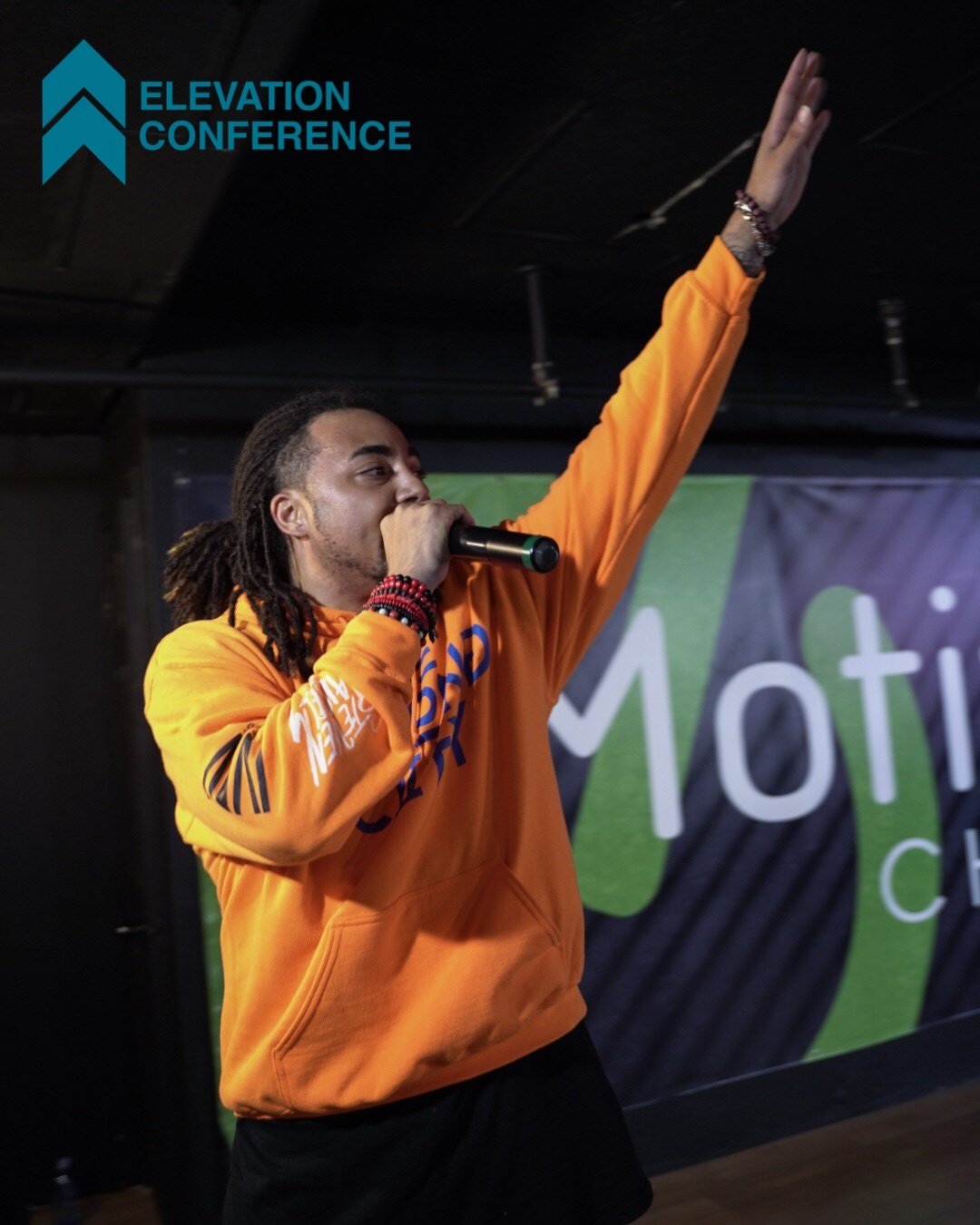

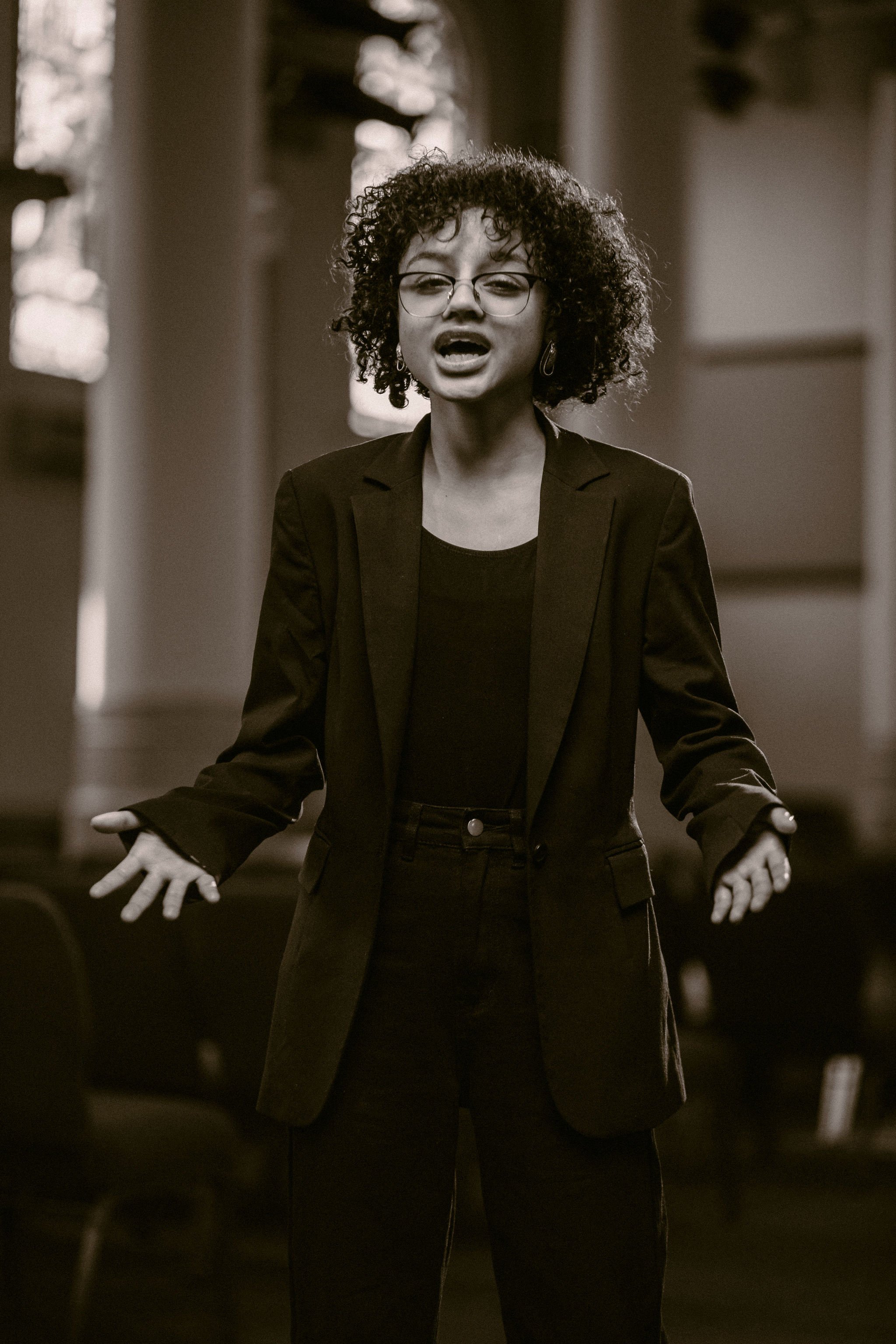




















A frank look at the sources, accuracy, limitations, and weaknesses of some commonly used church statistics in Boston. As convenient and convincing as statistics are, they can be misunderstood, misapplied, and generate misinformation.